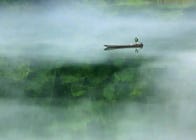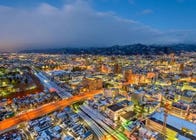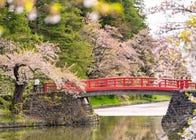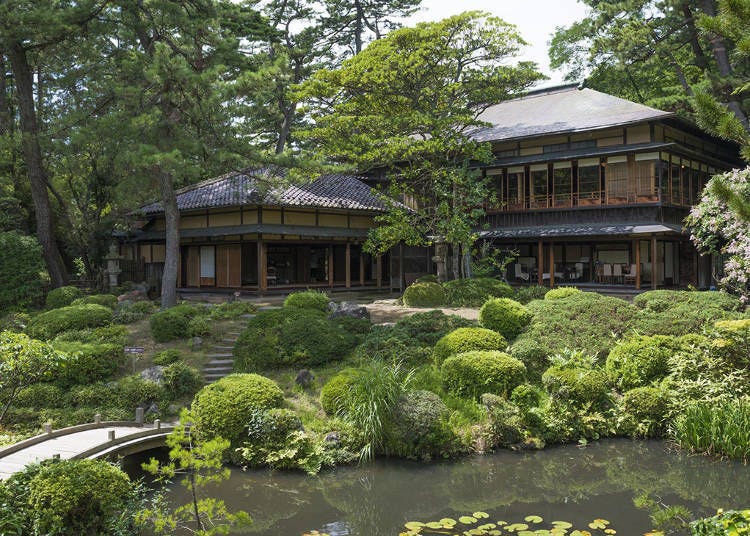
38 Fun Things to Do in Yamagata: Must-Visit Spots, Delightful Cuisine & Sightseeing Recommendations
- Written by: Steve Csorgo
Uncover the best of Japan’s nature-rich, deeply spiritual Yamagata region with our ultimate list of sightseeing spots, experiences, local food, and shopping, all separated by season!
Yamagata is an off-the-beaten-track region of Japan profuse with pristine nature, towering mountains, and top-class cuisine. It is also a spiritual hub with a legacy of mountain worship stretching back to ancient times, and it is a must-visit for fans of historical temples and shrines.
Here, we’ll be breaking down what to see, experience, eat, and buy in Yamagata by season, to help you plan a fulfilling itinerary no matter the time of year you visit.
What Sort of Place Is Yamagata?
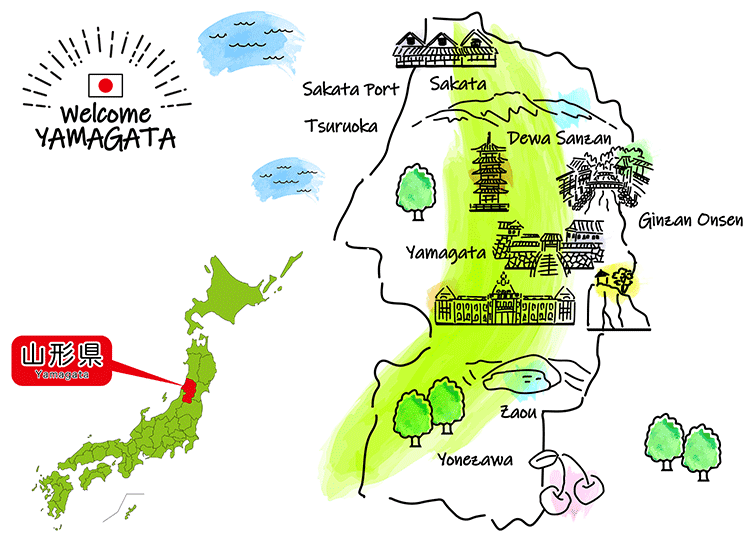
Yamagata Prefecture is located in the Tohoku region of northeastern Japan. It has a long coastline along the Sea of Japan and borders Niigata, Fukushima, Miyagi, and Akita prefectures. The changes between seasons in Yamagata are stark and dynamic, with winter in particular covering the region in a deep snowfall, drawing in skiers and snowboarders.
Yamagata is a fairly mountainous region, and is home to several of Japan’s most famous peaks, including Mt. Zao, the Three Mountains of Dewa, and Mt. Iide.
Its capital is Yamagata City, and there are several other mid-sized cities like Yonezawa, famous for its wagyu, Sakata, known for its historical buildings and seafood, and Tsuruoka, popular for its leafy Tsuruoka Park.
In terms of food, Yamagata produces around 70% of Japan’s domestic cherries, as well as the highly-rated Yonezawa beef, the renowned “tsuyahime” rice, and a range of top-quality sake from over 50 breweries dotting the prefecture.
Yamagata is also a haven for “onsen” hot springs, with the milky white waters of Zao Onsen and the enchanting hot spring haven of Ginzan Onsen being amongst some of the most famous in Japan.
- Okitama (south): Lots of hot springs, including many remote “hidden” ones. Also a foodie destination, with Yonezawa beef, grapes, and wine being produced in the region.
- Murayama (east): Surrounded by many of Yamagata’s most famous mountains, like Zao and Gassan. Home to the capital of Yamagata City, and around half of Yamagata’s population.
- Mogami (north): Filled with lush, untouched forests, and an abundance of seasonal inland produce like mountain vegetables and mushrooms.
- Shonai (west): A vast, spacious region dominated by the Shonai Plain and numerous beaches popular in summer and ports hauling in fresh seafood. The plain is also the largest rice-producing area in Yamagata.
How to get to Yamagata from Tokyo

Traveling by Shinkansen:
Accessing Yamagata from Tokyo is a breeze with the Yamagata Shinkansen bullet train. Departing from Tokyo Station, you can conveniently reach Yonezawa in approximately 2 hours and Yamagata City in around 2.5 hours, all without the hassle of changing train lines.
Direct Express Trains:
If your destination is Sakata, there's an excellent option for you as well. Hop on an express train directly from Niigata Station, and you'll find yourself in Sakata in about 2 hours.
Getting around Yamagata
Public Transport:
While exploring Yamagata by public transport is feasible, it's essential to note that services in rural areas might be infrequent. As a result, thorough planning is required to ensure smooth travel. If traveling by rail or bus, be sure you check connection times and locations of bus stops to help avoid surprises.
Opting for Car Rental:
For a seamless and flexible experience in Yamagata, consider renting a car. Having your own vehicle allows you to navigate the region with ease and gives you the freedom to explore the area without being tied to schedules.
Murayama Region
The Murayama Region is located in the central part of Yamagata Prefecture. It is known for its hot springs, including Ginzan Onsen and Zao Onsen. The region is also home to the Yamagata Hanagasa Festival (August 5-7), one of Japan's largest and most colorful festivals.
Key cities: Yamagata City, Tendo
Explore Ginzan Onsen
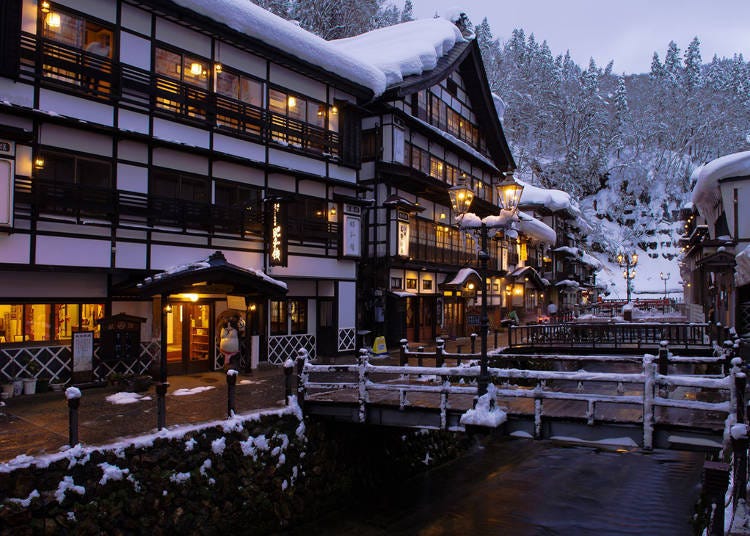
・Recommended in autumn and early or late winter
The whimsical Ginzan Onsen is a Ghibli film brought to life. Hidden amongst the deep wilderness of Obanazawa, dense rows of rustic multi-storey wooden inns line both sides of the Ginzan River, each housing its own natural hot spring bath rich in sulfate and sodium-chloride. Ginzan Onsen actually started off as a silver mine before gaining popularity as a hot spring resort during the Taisho Period (1912-1926) and beginning of the Showa Period (1926-1989). Even today, it remains largely unchanged from its heyday, letting visitors slip back in time to an enchanting vision of early Japan.
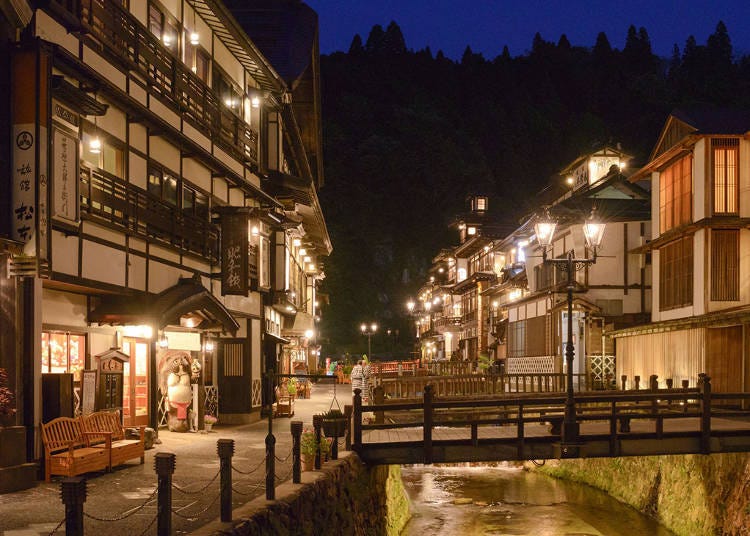
From the evening, antique gas lamps cast a warm glow over the township, doubling its charm. Many of the inns flaunt intricate reliefs on their walls, while the asphalt is layered with tiles depicting snowflakes, serving up an endless feast of art for the eyes.
Guests can fully indulge in these wonders by staying the night for the full Ginzan Onsen experience, while day-trip visitors can experience the waters straight from the source at the Warashi-yu Foot Bath, right by the riverside. There is also the stylish Shiroganeyu Public Bath, designed by celebrated Japanese architect Kengo Kuma. There are likewise many restaurants, cafes, and shops dotting the streets, including those selling the town’s famous “curry bread.”
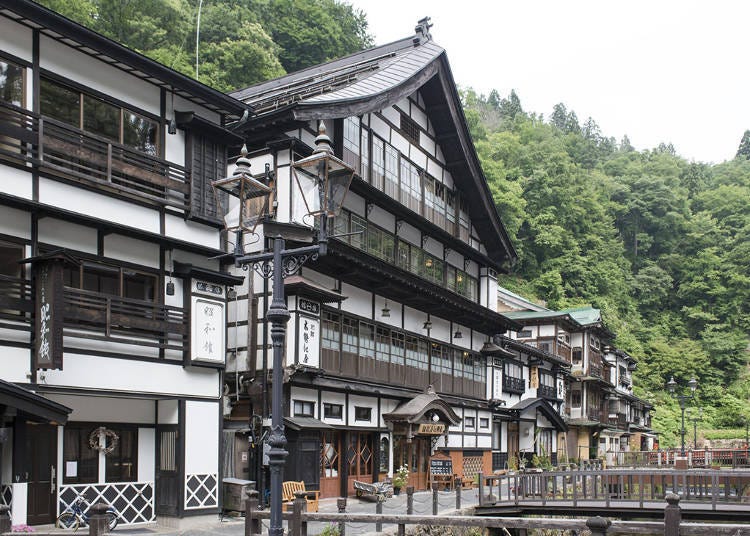
While the lush snowfall of winter is arguably Ginzan Onsen's most alluring appearance, autumn sees the area engulfed in colorful foliage sure to be equally captivating. Plus, the steadily dropping temperature makes bathing in the hot springs just as gratifying, making autumn an excellent time to plan your trip to Ginzan Onsen!
-

-
Address
Yamagata Prefecture Obanazawa City Yamagata Large Ginzan Shinhata, 999-4333
View Map -
Nearest Station
Oishida Station (Ou Line / Yamagata Shinkansen)
- Phone Number 0237-28-3933
-
Address
Yamagata Prefecture Obanazawa City Yamagata Large Ginzan Shinhata, 999-4333
Embark on a hike to Risshaku-ji Temple (Yamadera)
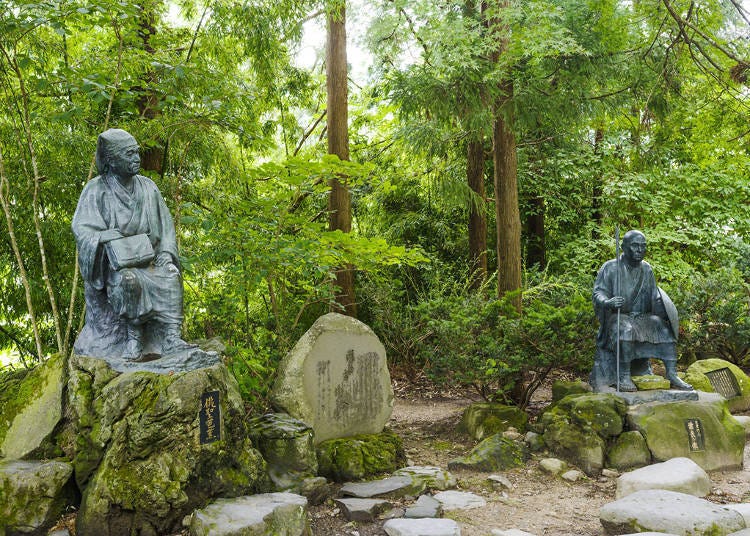
・Recommended in spring
With the melting snow and agreeable weather, spring is a great time to make the short trek up to Yamadera, a scenic cliffside mountain temple. Officially named “Hojusan Risshakuji,” the entire mountain is a site of worship, and it takes around an hour to hike from the trailhead to the temple’s Okunoin inn sanctuary, depending on your pace. Yamadera is believed to have been founded in 860, and the boundless nature and jaw-dropping views from the top will no doubt remain in your memories forever. The most famous structures are the Kaisando and Nokyodo buildings, which sit atop craggy rock cliff faces and are backed by sweeping panoramas down below.
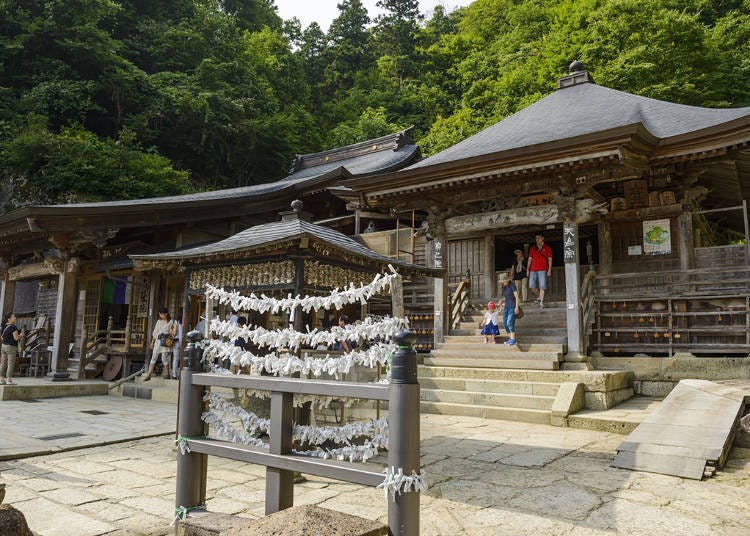
The approach consists of a roughly 1,000-step stone staircase, dotted with various temple structures along the way built beside dynamic rock formations, making it a tough but rewarding climb.
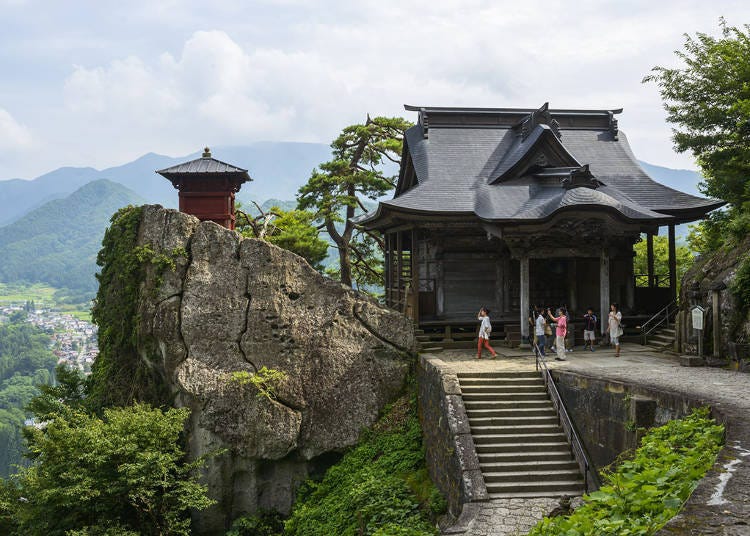
Balancing this is the convenient Yamadera Station, which is just around 500 meters from the entrance, and can be reached from Yamagata Station by train in about 20 minutes, making Yamadera a great spot for those without cars.
-

-
Address
4456-1, Yamadera, Yamagata-shi, Yamagata, 999-3301
View Map -
Nearest Station
Yamadera Station (Senzan Line)
5 minutes on foot
- Phone Number 023-695-2843
-
Address
4456-1, Yamadera, Yamagata-shi, Yamagata, 999-3301
Admire the stone statues of the 16 Arhats
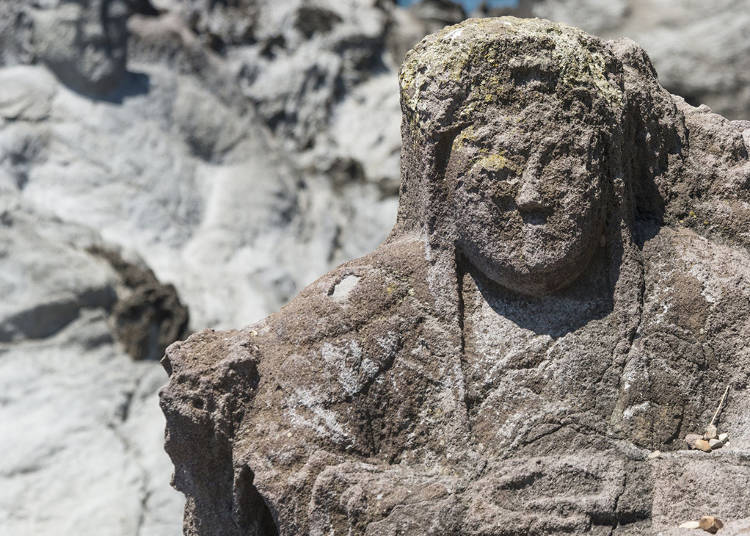
These images, which you can see beside the Bakkumon gate at Rissyakuji Honbo (at the base of Yamadera) were carved from andesite volcanic rock deposited in the Sea of Japan by an eruption of Mt. Chokai.
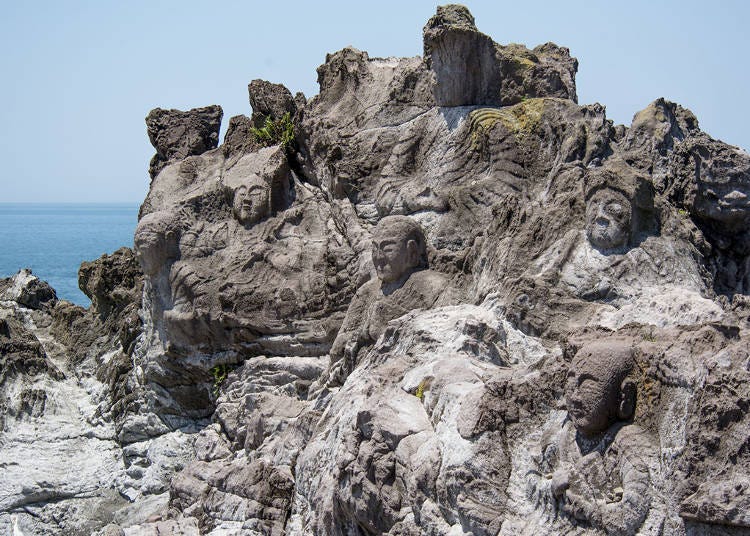
In 1864, wishing for the proliferation of Buddhism and the people's salvation through enlightenment, Priest Kankai, the 21st head of Kaizen-ji Temple of Fukura in Yuza, called for the creation of these holy images. He directed the efforts of local masons for the five years' time it took to complete the 22 sculptures. From mid-July to mid-August, the monument is lit up to sublime effect.
Relax at Zao Onsen
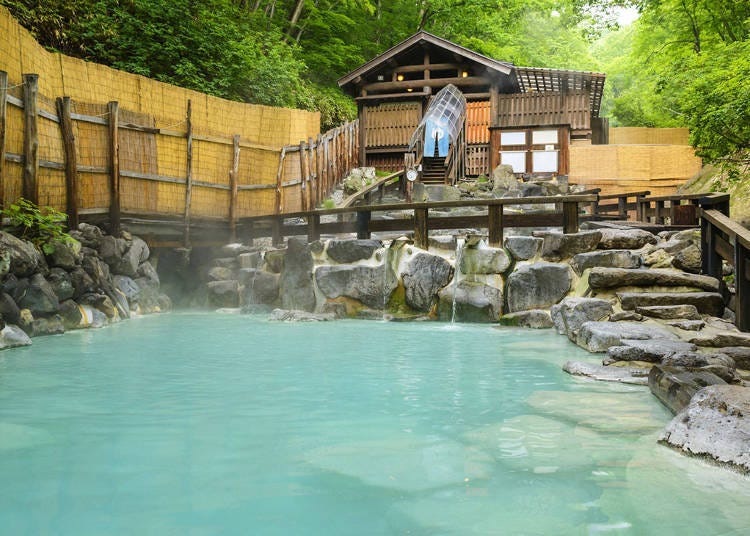
・Especially recommended in winter
Zao Onsen is a skiing mecca home to the sprawling Zao Onsen Ski Resort, which consists of 14 slopes and 12 courses covering the mountainside. After skiing, visitors can warm up in the town’s famous milky-white sulfur hot springs, said to have the second-highest acidity in Japan. While the waters can give the skin a bit of a sting, they are believed to have potent healing effects on cuts and ailments, and Japanese people have long sought out sanctuary in the region.

However, perhaps the biggest draw to Zao Onsen in winter are its otherworldly “snow monsters,” which are born from pine trees covered in ice and snow and molded into bizarre shapes by the ferocious wind and cold. They appear around January and February, and can be viewed from above on the Zao Ropeway, or skied between on the Juhyogen Course.
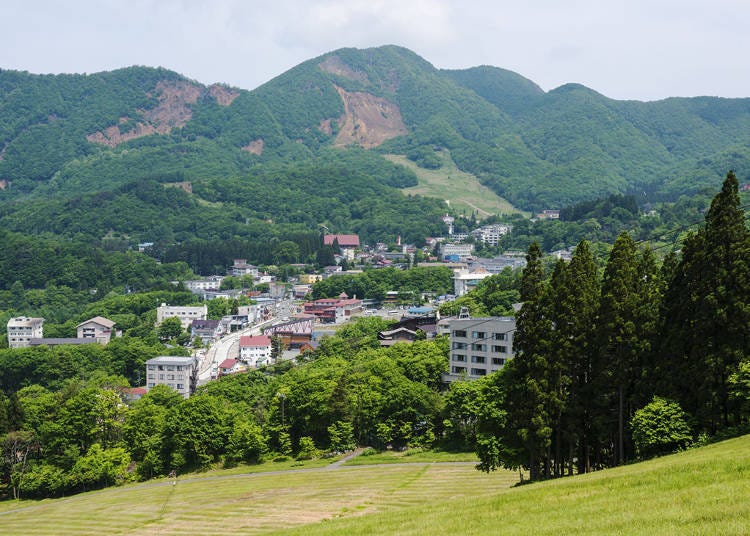
Zao Onsen itself is a well-developed hot spring resort town with lots of accommodation options. From luxury hotels to simple ski lodges and pensions, there’s something to suit all budgets.
-

-
Address
Zao Onsen, Yamagata City, Yamagata Prefecture, 990-2301
View Map -
Nearest Station
Yamagata Station (Ou Line / Yamagata Line / Yamagata Shinkansen)
- Phone Number 023-694-9518
-
Address
Zao Onsen, Yamagata City, Yamagata Prefecture, 990-2301
See gorgeous seasonal views with Zao Ropeway
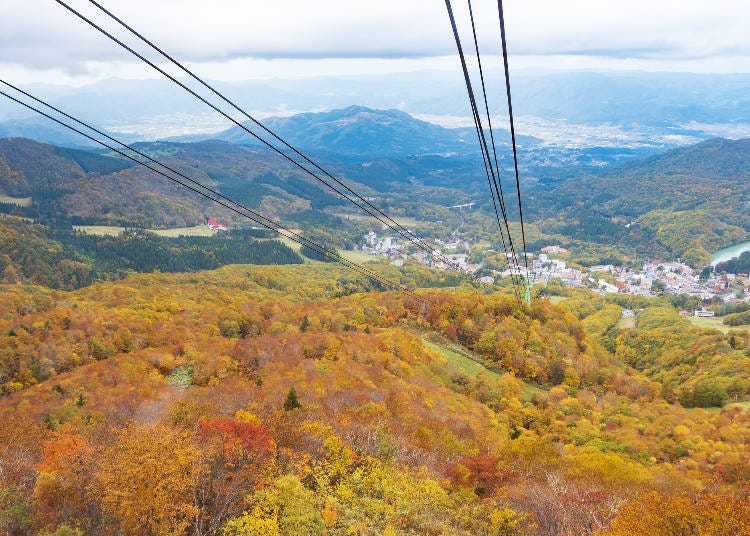
・Especially recommended in autumn
Yamagata flaunts some of the most magnificent fall foliage in all of Japan, and the Zao Ropeway lets you view it all from above without lifting a finger. The Zao Ropeway straddles the Zao Mountains, connecting three stations on its way up to the summit. With a myriad of different trees and altitudes, you’ll witness a stunning gradation of color from red, yellow, orange, with scatterings of green pines in between. Autumn hues first appear from the summit around late September, working their way down into the hot spring town by mid-October.
As the ropeway station is right in the middle of Zao Onsen, you can easily slot a ride into your itinerary between dips in the hot springs. It takes 7 minutes to reach the midway Juhyo Kogen Station, at which you’ll change to another cablecar heading to Jizo Sancho Station, taking an extra 10 minutes. From the top, you can walk to the 2.34-meter-tall Zao Jizoson Buddhist statue, which sits at an altitude of approximately 1,660 meters. It was erected all the way back in 1775, adding a fascinating historical flair to the journey.
-
Zao Ropeway Zao Sanroku Station蔵王ロープウェイ 蔵王山麓駅
- Address 229-3 Zaoonsen, Yamagata, 990-2301
Drive the scenic Zao Echo Line

・Area: Murayama
The Zao Echo Line is a scenic mountain road that traverses the Zao mountain range in Japan, between Yamagata and Miyagi prefectures. It is known for its stunning scenery in all seasons, but is perhaps most famous for its towering snow walls in spring.
The road is closed from early November to late April due to the heavy snowfall, but when it reopens, visitors can enjoy a truly unique experience. The snowplows that clear the road leave behind towering walls of snow, some of which can reach up to 10 meters tall. The snow walls typically last for a few weeks in late April and early May, and are a popular tourist attraction.
Even when the snow walls are gone, the Zao Echo Line is still a beautiful drive. In summer, the road is lined with lush greenery and wildflowers, and in autumn, the leaves turn brilliant shades of red, orange, and yellow. Visitors can also enjoy views of waterfalls, hot springs, and the surrounding mountain peaks.
-
Zao Echo Line蔵王 エコーライン
- Address near Kaminoyama, Nagano, Zaosan, Yamagata 999-3114
Savor local wine at Tendo Winery
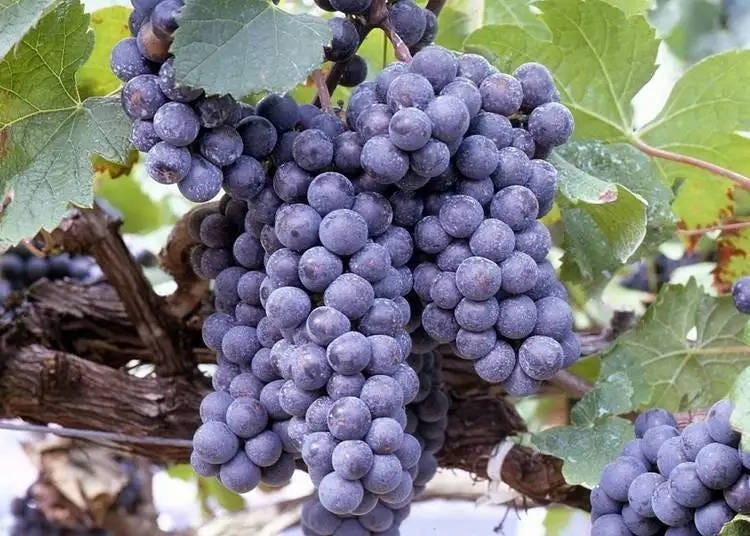
Tendo City is suitable for grape cultivation thanks to its long daylight hours and low rainfall. "Niagara" from Tendo Winery is a white wine fermented at low temperatures using Niagara grapes produced in Yamagata Prefecture. It has a sweet taste and the light, mellow aroma of grapes. The red wine, Yamagata Merlot, uses Merlot grapes grown in Yamagata Prefecture. It has a mellow fruit taste and a moderate astringency, and it’s perfect to enjoy during meals. There is also a line of wines made from Yamagata's specialty pear, La France.
In addition to selling wines, Tendo Winery also offers tours by appointment where you can experience the manufacturing process, plus sample products.
-
Tendo Winery天童ワイン
- Address 99, Takadama, Tendo Shi, Yamagata 994-0068
- Phone Number 023-655-5151
・Open: 9 AM - 5 PM
・Closed: irregularly
Indulge in Fuki-mame sweet treats
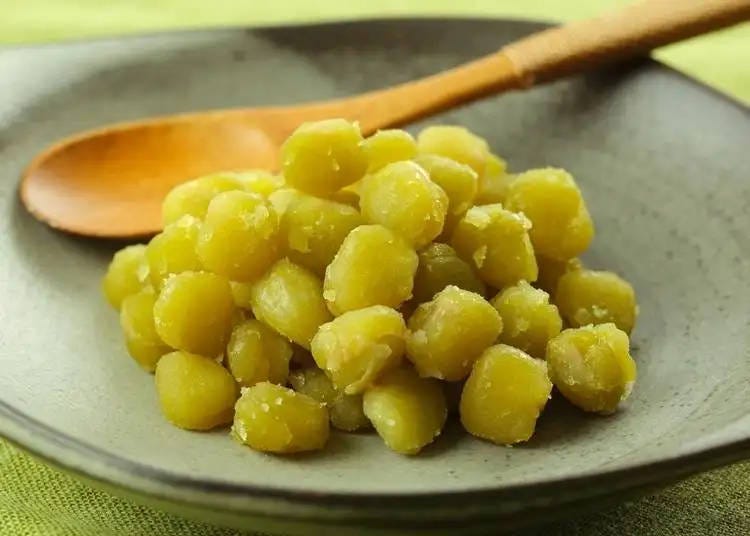
Founded in 1886, the confectionery shop Shinise CHÓEIDO is mostly known for its specialty: Fuki-mame.
Fuki-mame is a famous Yamagata confection made from green peas. Carefully-selected peas are peeled, then simmered so they don’t crumble. You can buy Fuki-mame uncooked, or cooked (in a vacuum pack that will preserve their freshness and flavor for a long time and is perfect for a souvenir).
Other popular products are the elegantly sweet Fukito Manju, made from Fuki-mame, and the lightly salted Butter Dorayaki, a combination of Fuki-mame and butter.
-
Shinise CHÓEIDO老舗 長榮堂
- Address 1-2-32, Inyakumachi, Yamagata, 990-0066
- Phone Number 023-622-5556
・Open: 8:30 AM - 6 PM
・Closed: open daily
Shop at S-PAL Yamagata

S-PAL Yamagata, a shopping center directly connected to JR Yamagata Station, is a five-story complex with fashion stores, restaurants, cosmetics, and drug stores. They have everything you need, from souvenirs, to travel essentials.
The second floor is lined up with famous confectioneries, pickles, soba noodles, local craft, and more, from all over Yamagata. If you forget to buy your souvenirs while visiting your favorite tourist spots, you can rest assured you’ll find what you want here. On the same floor, there is a café where you can enjoy sweets made with Yamagata fruits, for a perfect break.
-
S-PAL YamagataS-PAL山形
- Address 1 Chome-1-1 Kasumicho, Yamagata, 990-0039
- Phone Number 023-628-1106
・Open: 10 AM - 8 PM (check the official website for details)
・Closed: open daily
Discover Yamagata's folk history at Bunshokan Museum
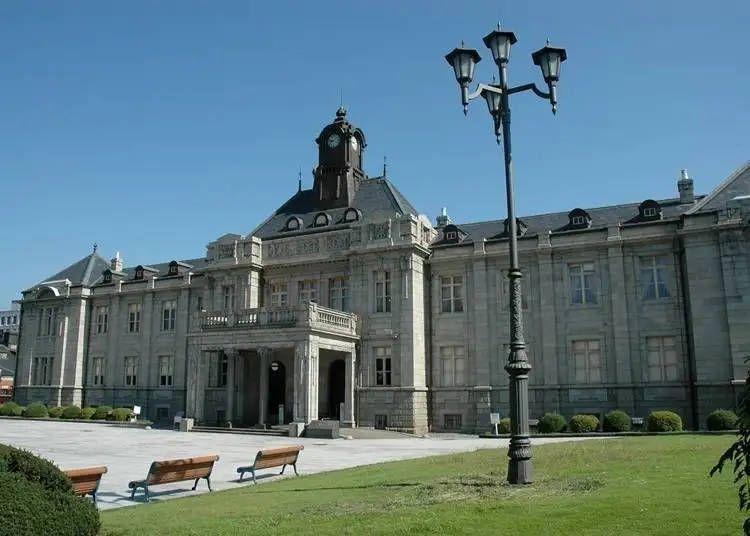
The central area of Yamagata City is dotted with buildings erected in the Meiji and Taisho eras (1868-1926). One of them is the Yamagata Prefectural folk Museum Bunshokan, the former prefectural office and the former prefectural assembly building, built in 1916.
This is a three-story building in the early modern period reconstruction style, and it's been designated as a national important cultural property, as. A representation of Western-style architecture in the early Taisho Era.
The clock tower in the center of the building is the second oldest clock tower currently in operation in Japan. The weight that moves the pendulum is still manually wound and adjusted by watchmakers once every five days.
One of the highlights of the building is the delicate craftsmanship, like the wooden railings of the decorated stairs, the stained glass with a. laurel wreath, and the plastered flower decorations on the ceiling, which are scattered throughout the building. The decorations with motifs of safflower and cherries, which are specialty products of Yamagata Prefecture are sometimes hidden. Look for them!
-

-
Address
3-4-51, Hatagomachi, Yamagata-shi, Yamagata, 990-0047
View Map -
Nearest Station
Yamagata Station (Ou Line / Yamagata Line / Yamagata Shinkansen)
10 minutes by bus
- Phone Number 023-635-5500
-
Address
3-4-51, Hatagomachi, Yamagata-shi, Yamagata, 990-0047
Stroll the historic Nanukamachi Gotenzeki canal district
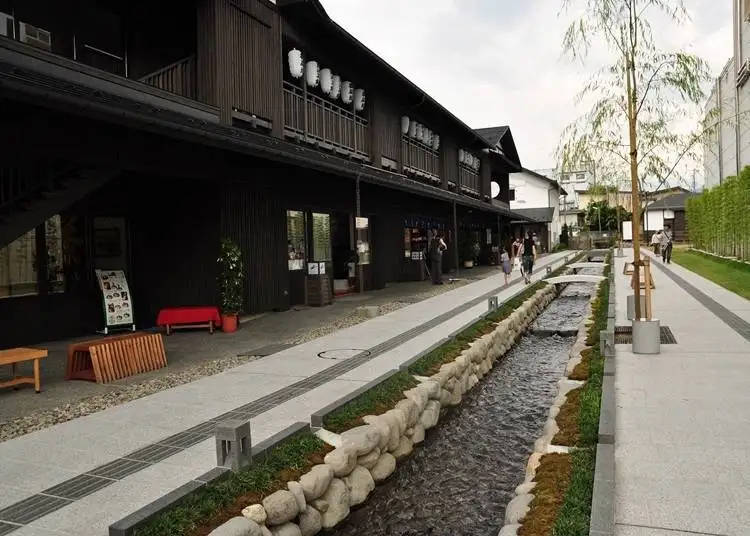
Nanukamachi Gotenzeki is located in Nanukamachi, a scenic shopping area in Yamagata City where unique cafes and shops line the roads. In the center of the town lie an impressive warehouse and buildings that were built in the Edo period and that resemble a Machiya, an old merchant quarter.
The waterway that runs along the building is a restored canal from 400 years ago that was used for domestic agriculture. Here you will find tea shops, soba shops, general stores, and cafes. This area is perfect for lunch. You can also enjoy it simply by walking among the Japanese-style buildings.
-
Nanukamachi Gotenzeki水の町屋 七日町御殿堰
- Address 2-7-6, Nanukamachi, Yamagata Shi, Yamagata 990-0042
- Phone Number 023-623-0466
・Hours: varies depending on store
・Closed: varies depending on store
Enjoy shopping at the retro Yamagata Marugoto-kan
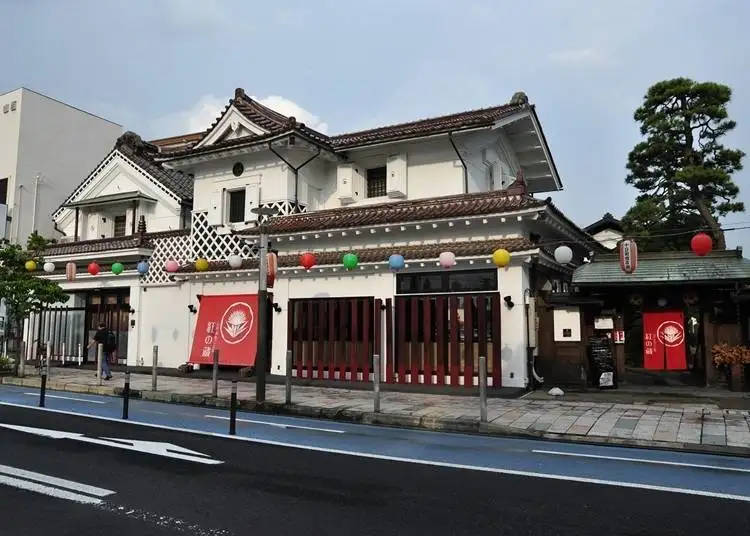
Yamagata Marugoto-kan Beni-no-kura is a warehouse located approximately 7 minutes by taxi from Yamagata Station. It is owned by the Marutani Hasegawa family, who are merchants specializing in one of Yamagata's local products, safflower. The warehouse complex consists of a main building made of pure white plaster and five additional warehouses. Within these buildings, visitors can find Agarashai, a shop that sells Japanese sake and traditional crafts made with rice from Yamagata Prefecture. Additionally, there is Café & Dining 990, a restaurant that offers a fusion of Yamagata's traditional dishes and western-style cuisine, as well as a tourism information center.
-
Yamagata Marugoto-kan Beni-no-kura山形まるごと館 紅の蔵
- Address 2-1-8, Tokamachi, Yamagata Shi, Yamagata 990-0031
- Phone Number 023-679-5101
・Hours: varies depending on the store
・Closed: varies depending on the store
Hit the slopes at Gassan Ski Resort

Gassan Ski Resort is a winter wonderland that offers a long skiing season from April to July, making it an ideal place for spring skiing. Situated at an elevation of 1,600 meters above sea level, it is guaranteed to provide genuine snow for skiing in the spring and early summer. Gassan Ski Resort is relatively basic and its slopes are divided into three categories: beginner, intermediate, and advanced.
-
Gassan Ski Resort月山スキー場
- Address Ubasawa, Shizu, Nishimurayama Gun, Nishikawa Machi, Yamagata 990-0734
Mogami Region
The Mogami Region is located in the northern part of Yamagata Prefecture. It is known for its fertile land and its abundant agricultural produce. The region is also home to the Mogami River Boat Ride, a popular tourist attraction that offers visitors a chance to experience the region's natural beauty.
・Key cities: Shinjo
Cruise Mogami River by boat
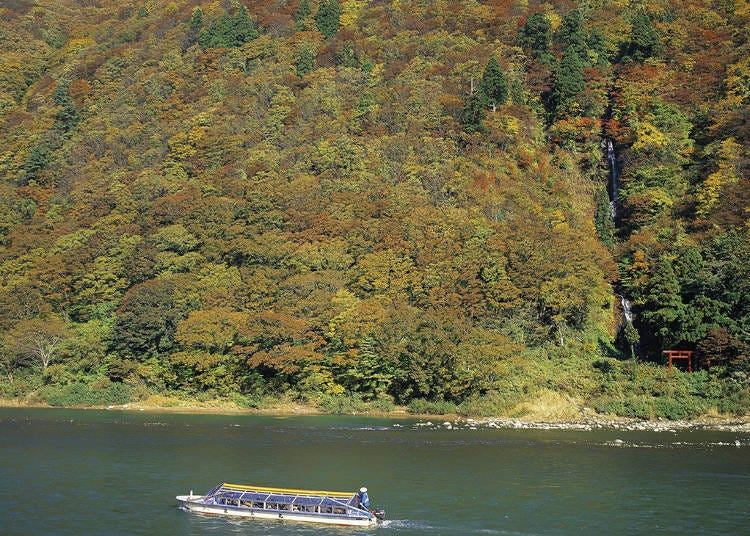
While winter may not sound like the best time for a river cruise, the heated seats and stunning silvery scenery of Yamagata’s Mogami River will no doubt change your mind! Boat cruises heading downstream on the Mogami River run all year, but they are equipped with Japanese-style “kotatsu” table heaters with blankets during the colder months, letting you view the Mogamikyo Gorge blanked in snow without suffering the bone-chilling cold.
Each boat comes with a boatman who will steer while singing traditional songs and serving as a guide. The course takes about an hour, and will cover roughly 12 kilometers, passing many highlights along the way. Sit back, unwind, and let these masters of the river show you the best of Yamagata’s wilderness.
-
Mogamikyo Basho Line Tourism Co., Ltd. Head office最上峡芭蕉ライン観光㈱ 本社
- Address 86-1 Furukuchi, Tozawa, Mogami District, Yamagata 999-6401
-
Nearest Station
Furukuchi Station
- Phone Number 0233-722-001
Unwind at Hijiori Onsen
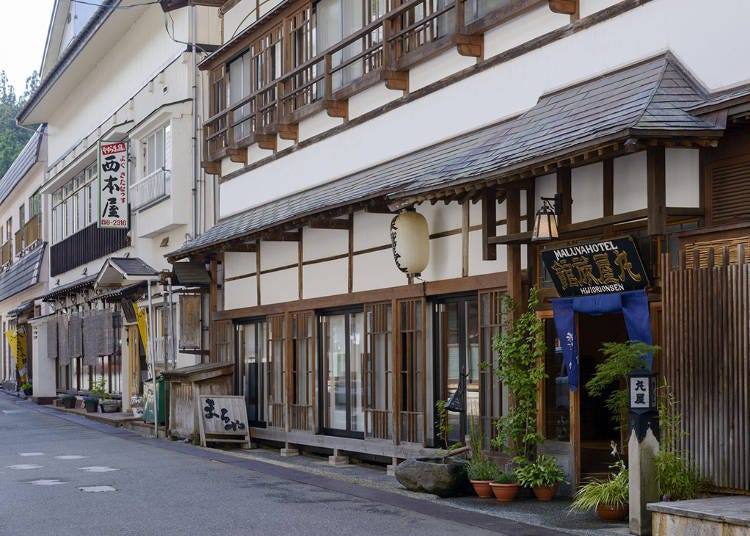
Hijiori Onsen is a small, quiet hot spring town nestled at the foot of Mt. Gassen, one of the three sacred mountains of Dewa.

It's said that the hot springs here were discovered by a monk in the year 807 CE, over 1,200 years ago. The town is notable for being one of the few remaining destinations in Japan for long-term hot-spring therapy, called toji, popular with those recuperating from physical ailments.
The twenty Japanese inns (ryokan) of Hijiori Onsen each have free-flowing hot spring baths, and there are also five footbaths in town, each unique.
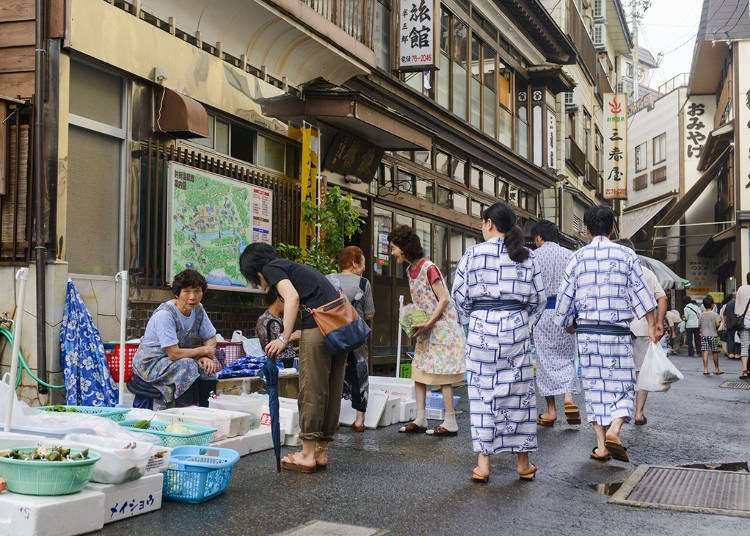
-
Hijiori Onsen肘折温泉
- Address Okura, Mogami District, Yamagata 996-0201
Shonai Area
Admire Sankyo Soko Storehouses
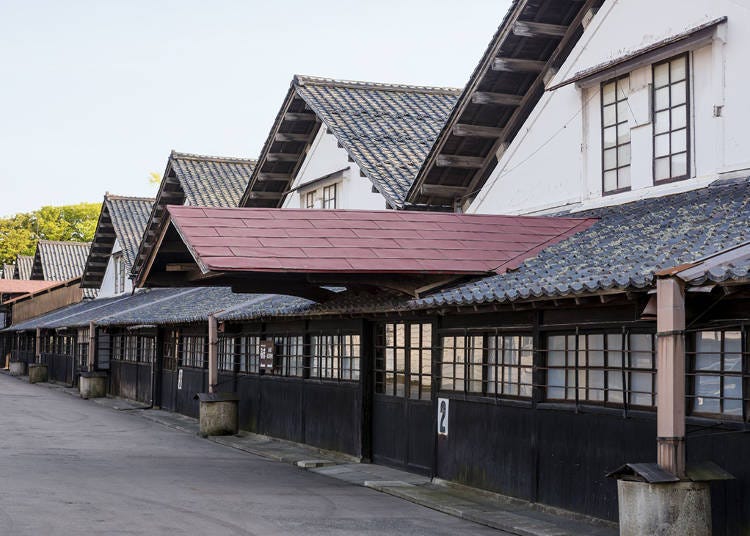
For the history buffs, one of the most fascinating Yamagata attractions is the Sankyo Soko Storehouses in Sakata, which are a row of 12 wooden storehouses originally constructed in 1893 and remaining today in remarkably good condition.
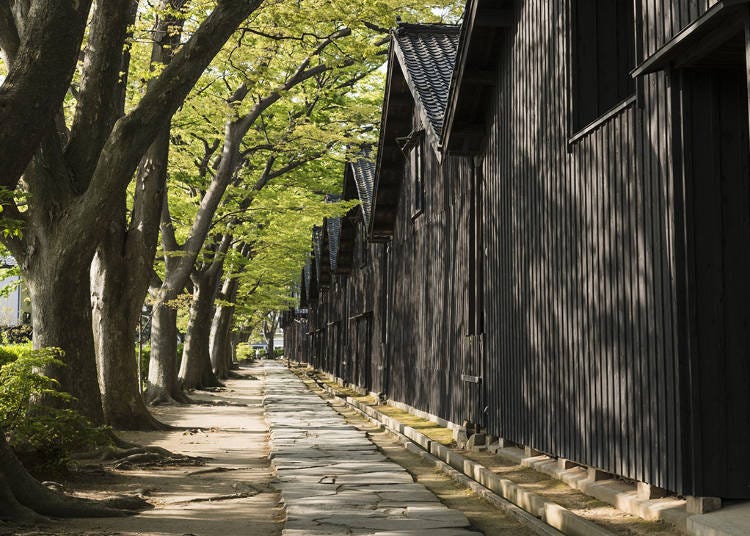
At the back of the storehouses is a cobblestone path lined by 150-year-old zelkova trees, whose vibrant colors offer a spectacular contrast to the blackened storehouse walls in autumn. The storehouses stand as a reminder of the history of Sakata, which once flourished as a bustling port on the prosperous “kitamaebune” trade route during the Edo Period.
-
Sankyo-Soko Rice Storehouses山居倉庫
- Address 1 Chome-1-8 Sankyomachi, Sakata, Yamagata 998-0838
Taste awesome seafood at Sakata Port Market
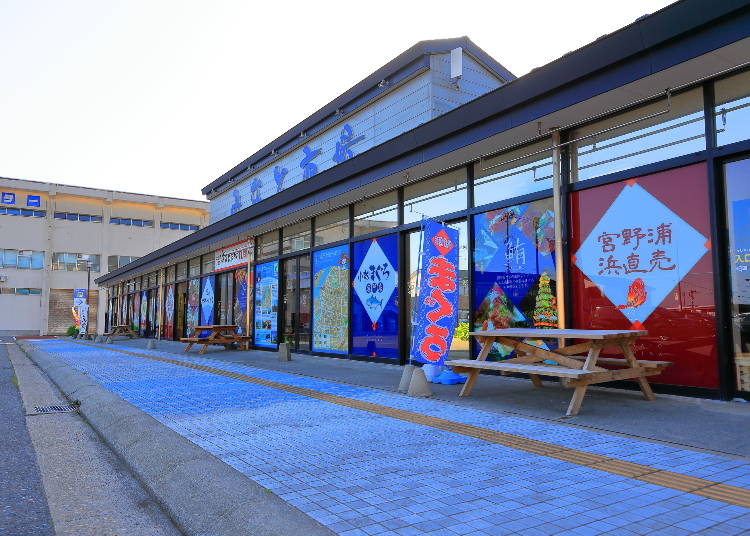
Being a coastal city on the Sea of Japan, Sakata is naturally famous for its exquisite seafood. The best place to relish these bounties is at the Port Market, which has its own restaurants, shops, and more. Upstairs is Tobishima, a no-frills food hall serving up bulky “kaisendon” seafood bowls at market prices, letting you relish the pinnacle of Yamagata seafood without breaking the bank.
For a more immersive experience, we suggest joining a tour and sushi workshop, which will give you access to the early-morning wholesale market to see the traditional fish auctions, after which you’ll get to chow down on a helping of fresh sushi straight from the market itself.
-
Sakata Port Marketみなと市場
- Address 2 Chome-5-56 Funabacho, Sakata, Yamagata 998-0036
Collect Oranda Senbei rice crackers as souvenirs
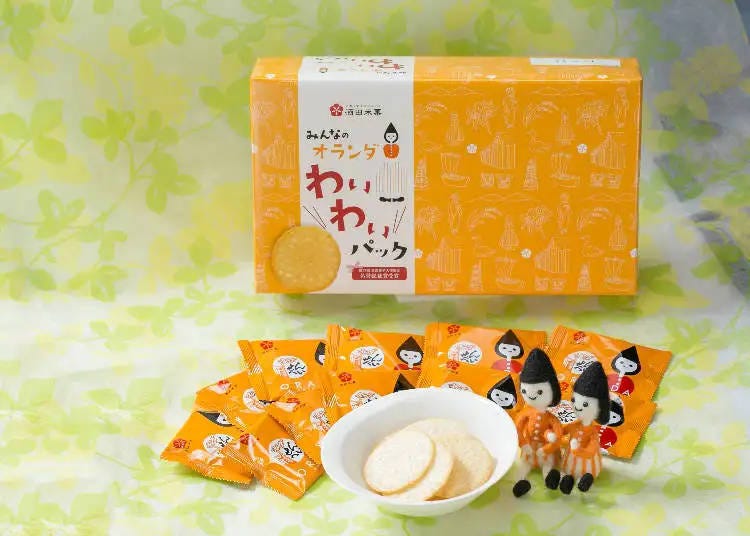
If you want to know more about "Dutch-style" Oranda Senbei rice crackers, stop by the Oranda Senbei Factory in Sakata City. On the first floor, there is a corner where you can learn about the making of rice crackers in the Shonai region, as well as the history of Oranda Senbei rice crackers. On the second floor, there is a café where you can enjoy rice-flour pancakes, as well as a souvenir-store corner.
For souvenirs, we recommend the Minna no Oranda Waiwai Pack, 51 packs of two different kinds of Oranda Senbei rice crackers.
The facility also holds a senbei-making experience, where you can bake the senbei dough yourself and season it to your liking.
-
Oranda Senbei FactoryオランダせんべいFACTORY
- Address 2-24, Ryoucho, Sakata Shi, Yamagata, 998-0832
- Phone Number 0234-25-0017
・Open: 9 AM - 5 PM; factory tour until 3:40 PM
・Closed: Mondays
Visit Dewa Sanzan for sightseeing
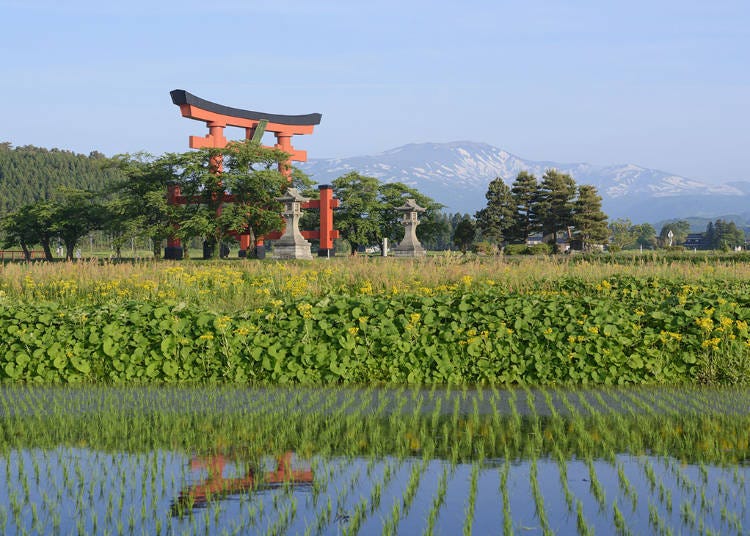
・Especially recommended in summer
With the heat and humidity kicking in, summer is a suitable time to retreat to the cool air of Yamagata’s many mountains. The most famous set of peaks in the prefecture is the Dewa Sanzan, which translates to the “Three Mountains of Dewa.”
This is the collective name for Mt. Haguro, Mt. Gassan and Mt. Yudono, which are all sacred mountains worshiped since ancient times. Mt. Gassan is the main peak, with Mt. Haguro to the north and Mt. Yudono to the southwest, each connected by a ridgeline.
At the Mt. Haguro Saikan temple lodge, visitors can enjoy a meal of shojin ryori, the monks' ascetic vegetarian cuisine, and can even stay the night (reservations required).
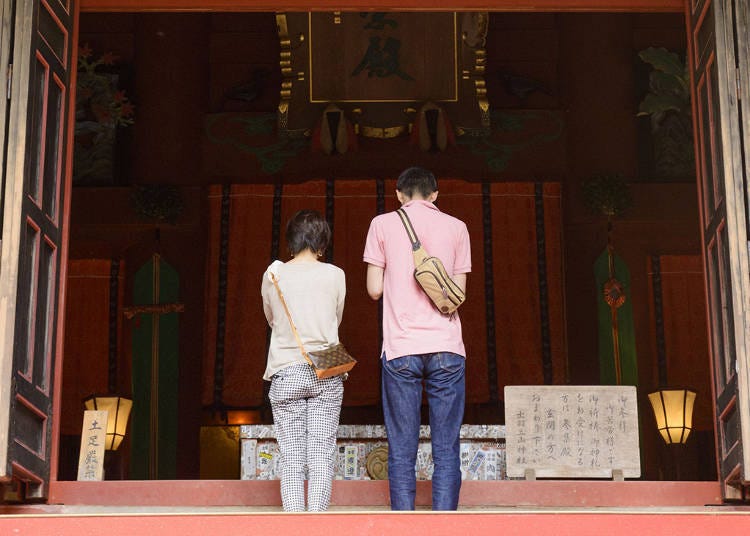
The word “Dewa” comes from the Dewa Province, the former name of the region. The Dewa Sanzan have long been a prominent site of worship for people in Tohoku, and it is said that a temple was founded in the area as early as the 6th century.
Mt. Yudono is home to the scenic Yudonosan Shrine, which is where “yamabushi” mountain monks undergo their ascetic practices. Often clad in white robes, you may spot them walking the tails, and visitors keen to learn more can join in their training through tours. The 1,984-meter-tall Mt. Gassan can be ascended in just around 2.5 hours from the 8th Station, which is accessible by car (climbing period is from July 1 to mid-October). It is covered by primeval beech forests and rare alpine plants, making it a joy for nature-lovers.
Mt. Haguro exudes a deeply spiritual, otherworldly atmosphere, and is home to rows of towering, ancient cedar trees lining its iconic 2446-step stone staircase, as well as a beautiful Five Storied Pagoda.
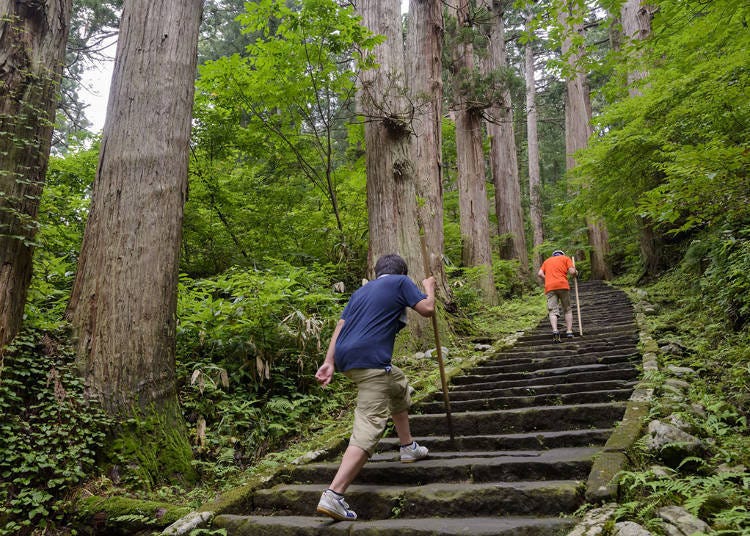
There are numerous other hiking trails around the mountains, so make your itinerary and leave your worldly troubles behind in favor of the nurturing wilderness of this holy trinity!
-

-
Address
7, Haguromachitouge, Tsuruoka-shi, Yamagata, 997-0292
View Map -
Nearest Station
Tsuruoka Station (Uetsu Line)
55 minutes by bus
- Phone Number 0235-62-2356
-
Address
7, Haguromachitouge, Tsuruoka-shi, Yamagata, 997-0292
See the Mt. Haguro Five-Storied Pagoda
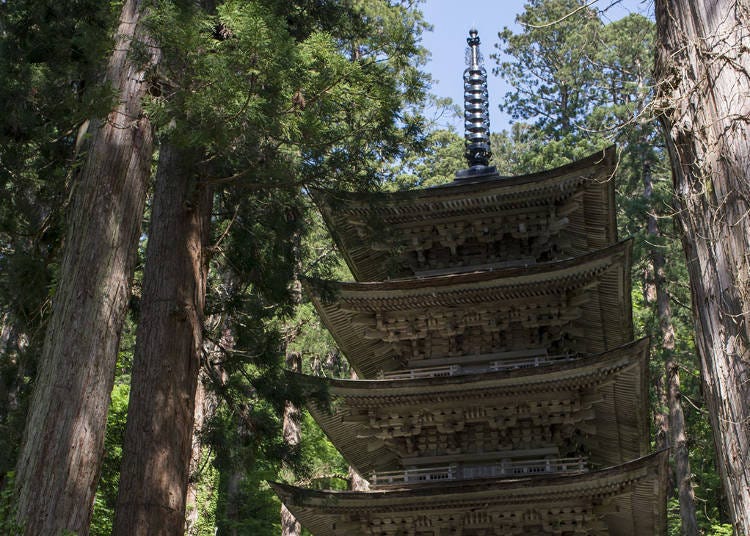
The Mt. Haguro Five-storied Pagoda is said to be the oldest tower of its type in the Tohoku region. The current structure was built about 600 years ago, with a history that goes back even further.
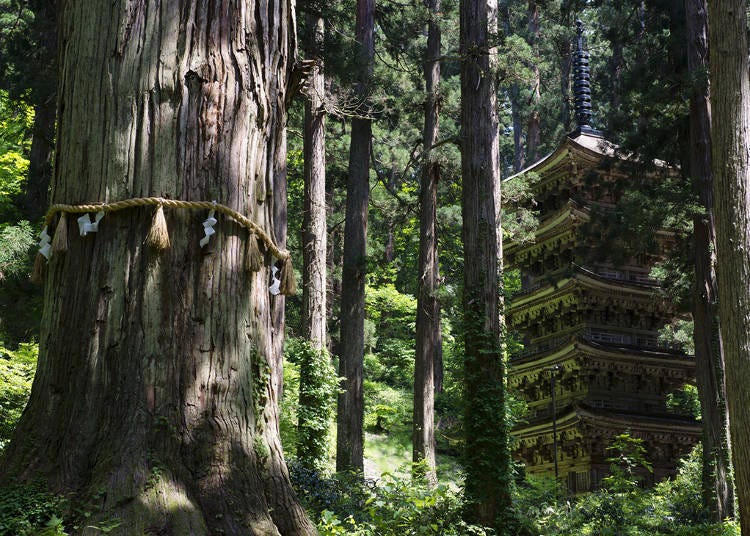
The 29-meter-tall wooden pagoda has been designated as a National Treasure. Nearby, there is an ancient Japanese cedar tree that is around 1,000 years old and has a circumference of 10 meters.
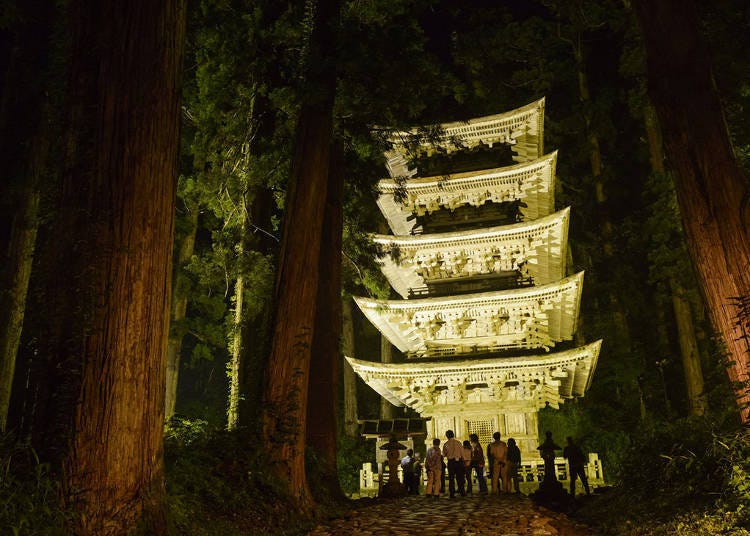
-

-
Address
7, Haguromachitouge, Tsuruoka-shi, Yamagata, 997-0292
View Map -
Nearest Station
Tsuruoka Station (Uetsu Line)
40 minutes by bus
- Phone Number 0235-62-2355
-
Address
7, Haguromachitouge, Tsuruoka-shi, Yamagata, 997-0292
Explore Tsuruoka Park's scenic beauty
・Recommended in spring
Spring is the time to immerse yourself in the beauty of nature as it shakes off the snow and returns to life with an explosion of colorful flowers and vibrant greenery. With such intense winters, the bliss of spring is felt strongly in Yamagata, and there are countless parks, gardens, and nooks of untouched wilderness to witness the beauty of the season.
Tsuruoka Park, in Tsuruoka, is one such place. In spring, it flaunts rows of magnificent moatside cherry blossoms that peak around mid-April, giving travelers another chance to see them after the petals have fallen in Tokyo. A 10-minute drive away is Akagawa Kasen Ryokuchi Park, which likewise boasts a long row of cherry trees following the Akagawa River.
Tsuruoka Park also has plenty of year-round attractions. It was once the site of Tsurugaoka Castle, whose moats and stone walls remain in the park today. It also houses the grand Western-style Taihokan building, which was constructed in 1915 to commemorate the ascension of Emperor Taisho to the throne. It flaunts distinctive architecture consisting of white weatherboard walls topped by a bright red dome, and it now serves as a museum to showcase the achievements of great individuals from Tsuruoka. At the park's center also sits the gorgeous Shonai-jinja Shrine, which was founded in 1877.
Other highlights include Chidokan, a “han” school near the park established in 1805 to cultivate a new generation of well-educated citizens to lead the Shonai Domain. And don’t forget to check out the Chido Museum, whose grounds contain several historical structures including the Former Tsuruoka Police Station, another Western-style building with eye-catching blue weatherboards and red roof tiles.
Appreciate photography at Domon Ken Museum
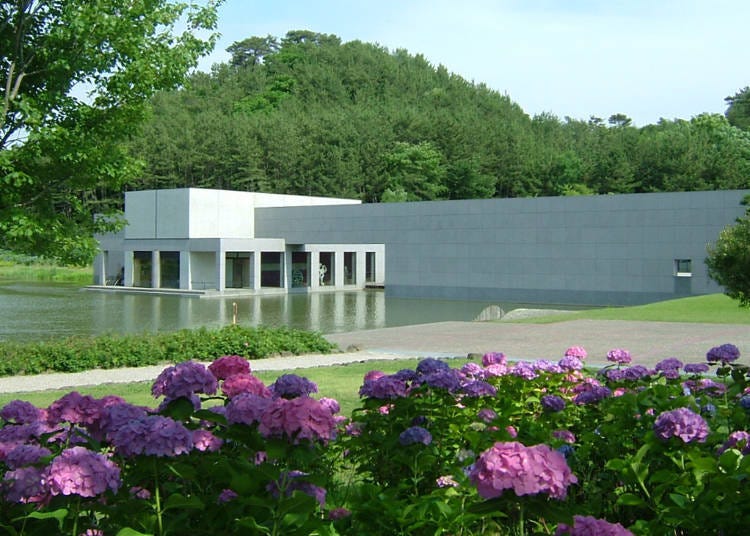
Ken Domon was one of the photographers that best represented postwar Japan: a master in the field who established the concept of realism in photography. This commemorative museum, Japan's first museum of photography, is home to his entire body of work: over 70,000 photographs.
With the beautiful scenery of Mt. Chokai and the hydrangeas lining Lake Ken nearby, the visual harmony between the building and nature gives the museum itself an artistic feel.
-

-
Address
2-13, Iimoriyama, Sakata-shi, Yamagata, 998-0055
View Map -
Nearest Station
Sakata Station (Uetsu Line)
21 minutes by bus
- Phone Number 0234-31-0028
-
Address
2-13, Iimoriyama, Sakata-shi, Yamagata, 998-0055
Marvel at art & gardens at Honma Museum
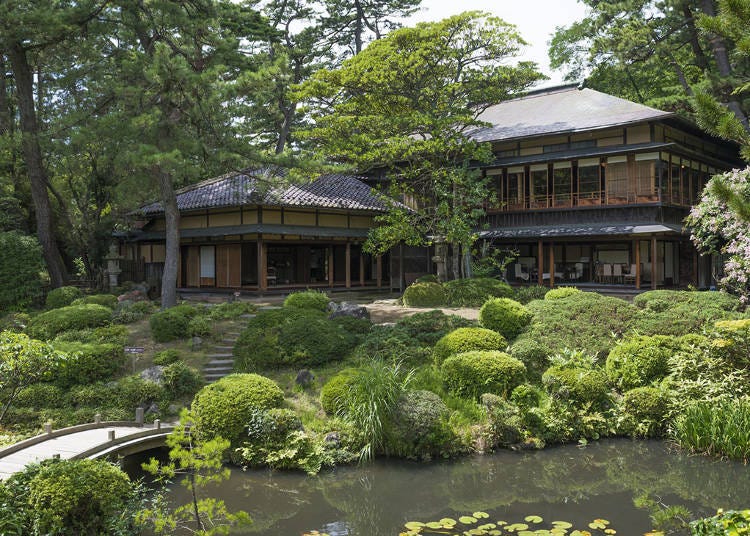
This art museum was opened by the Honma merchant family in 1947, making it Japan's first private art gallery to be established in the postwar period.
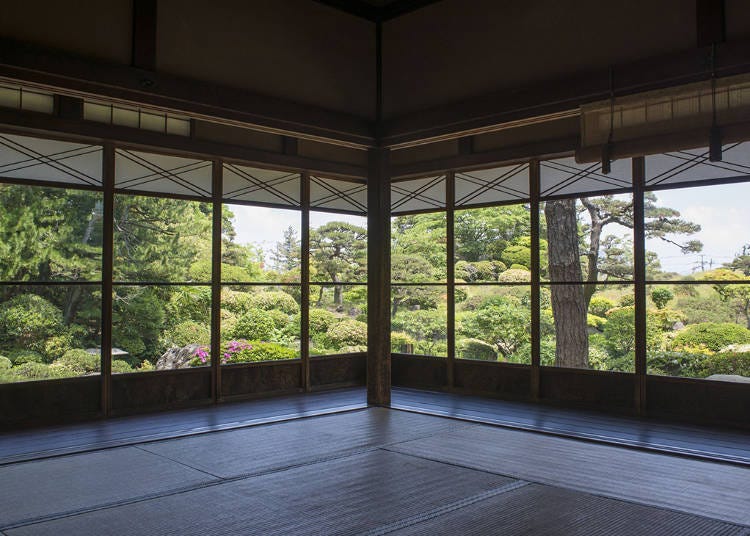
The museum's main building, called Seienkaku, is the family's former villa, built in the traditional shoin-zukuri architectural style over 200 years ago.
Dating to the same period is the attached Kakubu-en, a strolling garden that is elegantly laid out around a path circling a central pond, framing the backdrop of Mt. Chokai in the distance.
-
Honma Museum本間美術館
- Address 7-7 Onaricho, Sakata, Yamagata 998-0024
・Hours: Open daily 9 AM - 5 PM
・Official website: <a href="http://www.homma-museum.or.jp/">http://www.homma-museum.or.jp/</a>
Immerse in culture at Chido Museum & Sakaishi Garden
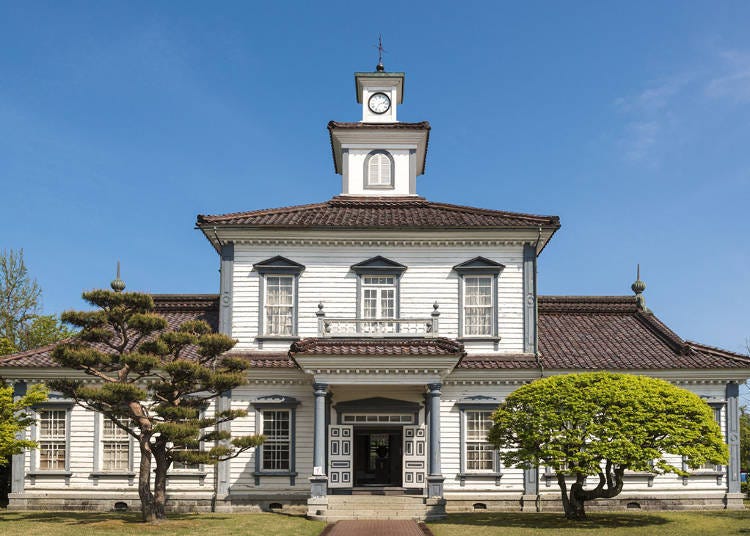
Located in what was once the outer courtyard of Tsuruoka (Sakai) Castle, the Chido Museum is a collection of historical buildings from the late Edo, Meiji, and later periods that have been relocated here and now illustrate the history and culture of the area.
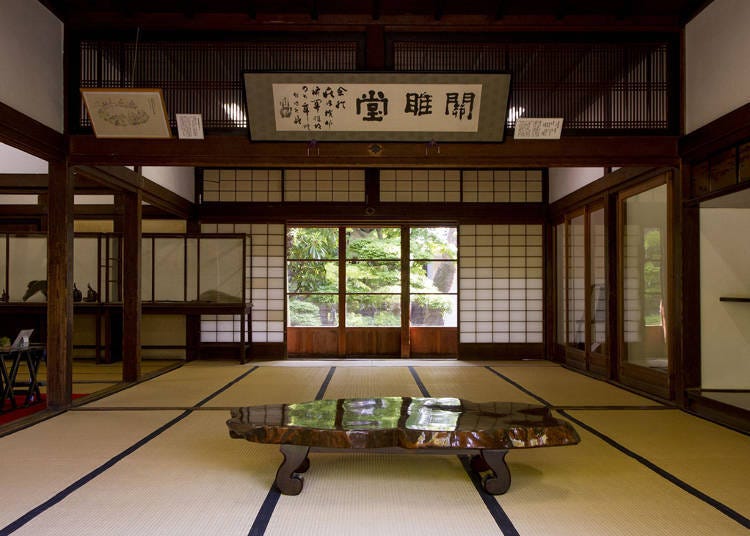
Important buildings include the former Nishitagawa District Office, the old Tsuruoka Police Station, and a traditional rural farmhouse.
Visitors can enjoy matcha green tea and Japanese confections while gazing upon the old-fashioned Japanese garden, designed in the rare shoin style.
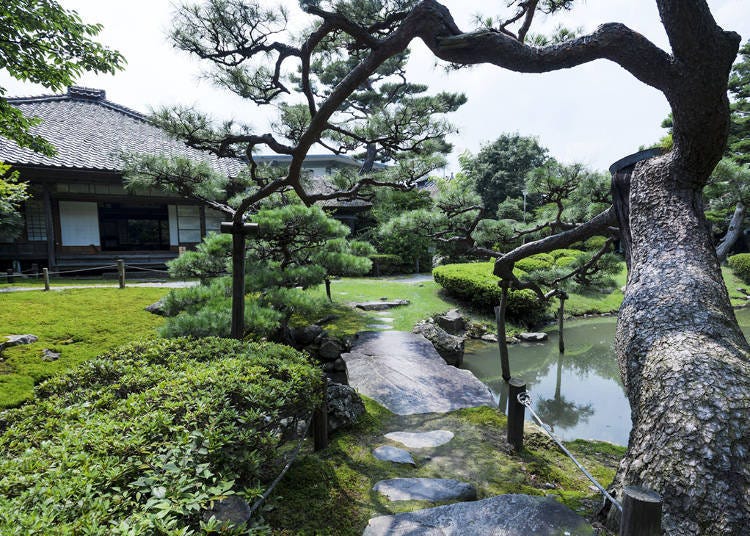

-
Chido Museum致道博物館
- Address 10-18 Kachushinmachi, Tsuruoka, Yamagata 997-0036
・Open daily 9 AM - 5 PM
・Official website: <a href="http://www.chido.jp/">http://www.chido.jp/</a>
Surround yourself with nature at Mt. Chokai & Tobishima Island Geopark

With a peak elevation of 2,236 meters and its foot dipping into the sea, Mount Chokai is a beautiful free-standing mountain sometimes called the "Fuji of Dewa."
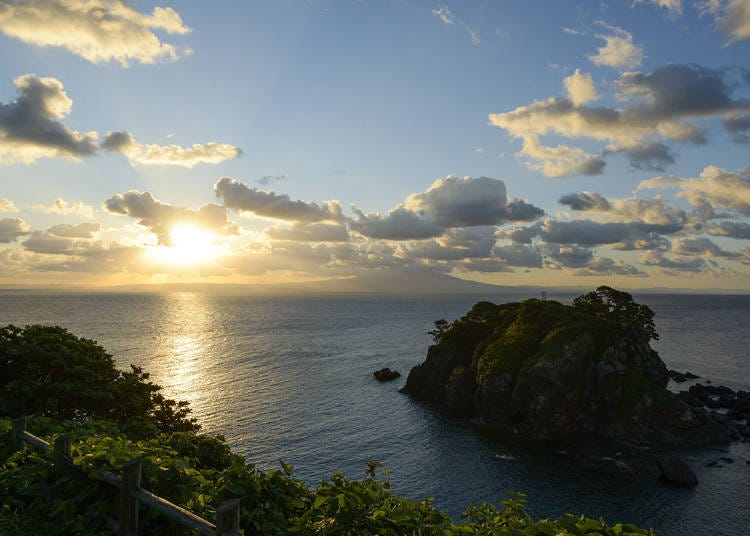
It has long been revered as the guardian of the surrounding area's inhabitants. The island of Tobishima is located about 39km (24 mi) to the northwest of the city of Sakata and can be reached by ferry in about 75 minutes. As a stopover for migratory birds, it's a top-rated destination in spring and autumn for birdwatchers.

-
Mount Chokai鳥海山
- Address Fukura, Yuza, Akumi District, Yamagata 999-8521
Enjoy a relaxing hike to Tamasudare Falls
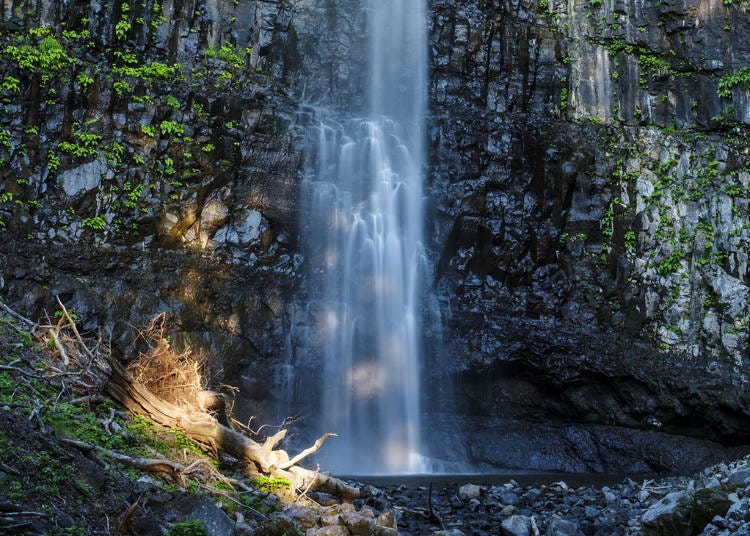
At the base of Mt. Chokai is Tamasudare Falls, one of the tallest waterfalls in the Tohoku region. It is said to have been named by Kobo Daishi, founder of Shingon Buddhism, and is popular as a “power spot” because of the negative ions generated by the rushing water.
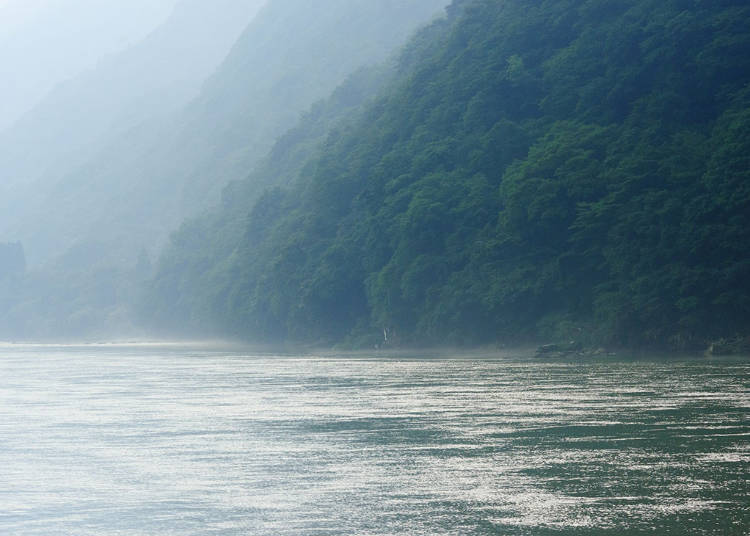
Listening to the ferry captain's renditions of sailing songs is also a highlight of the experience. In winter, kotatsu boats equipped with heated table seating keep passengers warm so that the cruise can be enjoyed year-round.
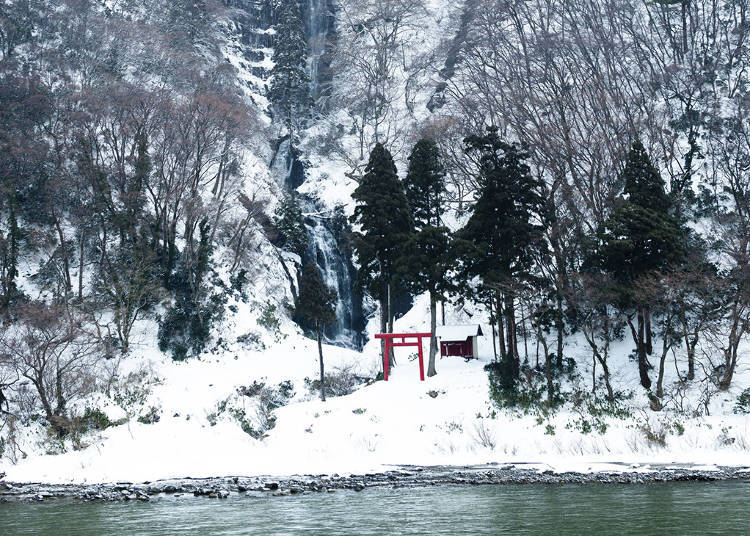
-
Tamasudare Falls玉簾の滝
- Address 52-1 Masuda, Sakata, Yamagata 999-8201
Experience tradition at Somaro Maiko Teahouse
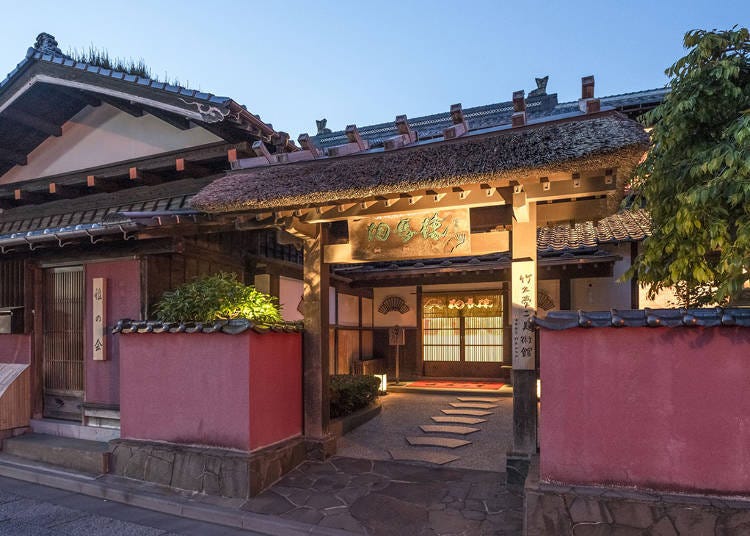
With a history that dates back to the 17th century, this teahouse in Sakata offers classical Japanese entertainment by maiko (apprentice geisha) in a luxurious setting with gorgeous artwork and Kyoto-influenced architecture.
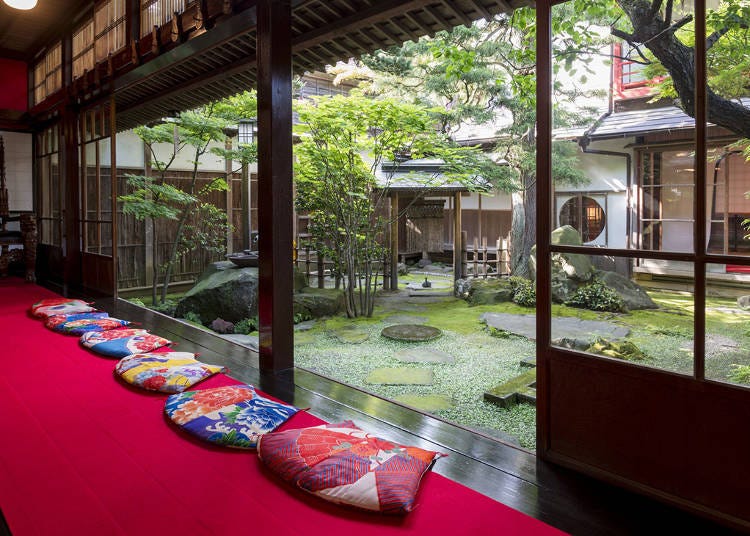
Exclusive establishments by tradition, teahouses (ochaya) can still sometimes be expensive for the budget traveler, but at Somaro, guests can see a maiko dance, held daily, for a very reasonable cost. Those who would like to enjoy a more private viewing can make reservations for a lunch performance, which includes a special bento lunch.
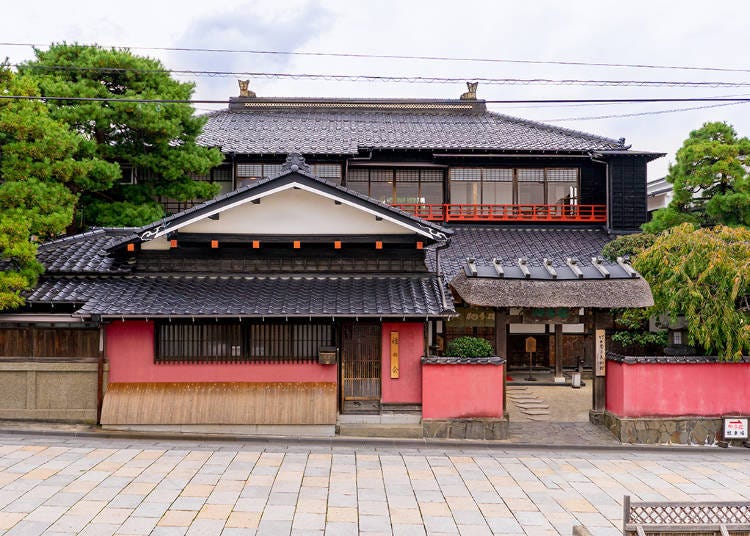
-
Somaro Maiko Teahouse舞娘茶屋 相馬樓
- Address 1 Chome-2-20 Hiyoshicho, Sakata, Yamagata 998-0037
・Hours: 10 AM - 3:30 PM
・Closed Wednesdays
What to eat in Yamagata
Delight in Imoni cuisine

Imoni is a Yamagata hotpot dish centered around the “taro” root vegetable, with helpings of konnyaku, spring onions, mushrooms, burdock root, and meat to boot, and flavored with soy sauce or miso. The dish has a long history in Yamagata, with two different origin stories attributed to its creation.
Imoni is eaten once the taro is ready for harvest in autumn, making it a staple dish of the season available through until the end of winter. Hearty and nutritious, it’s designed to provide the warmth and energy needed to survive the chilly autumn and harsh winters, and is served at restaurants and izakaya all throughout Yamagata. The meat and flavorings differ depending on the region, with beef and soy sauce favored in Yamagata City, while those of the Shonai region prefer pork and miso.
Enjoy dishes made with Yonezawa Beef
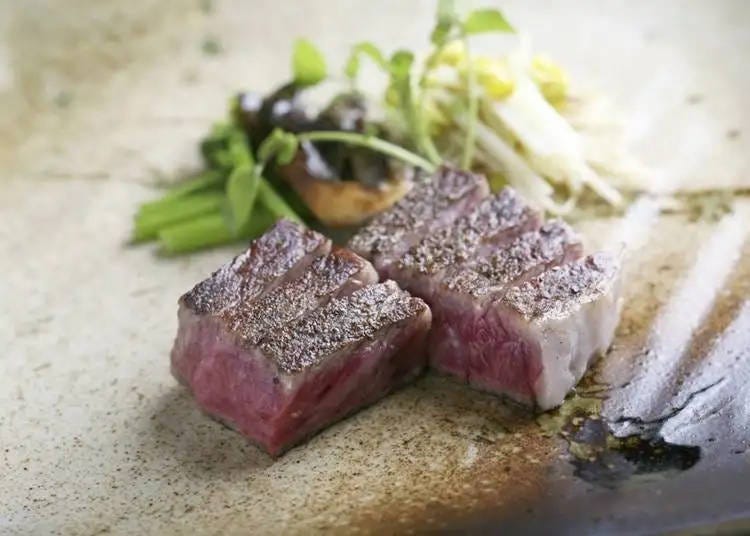
・Area: Okitama
Wagyu is one of Japan’s most coveted delicacies, and for those in the know, wagyu from Yonezawa and surrounding Okitama region is put up alongside Kobe beef and Matsusaka beef as one of the three best beef brands in Japan.
Its popularity is said to have gotten its start in the early Meiji Period, when Charles Henry Dallas, a British teacher posted to the Yonezawa area, was so impressed by the beef's flavor that he brought a calf back to Yokohama with him at the end of his teaching appointment.
To produce Yonezawa Beef, Japanese Black heifer cattle are carefully raised under strict conditions on a high-quality feed of wheat and corn, yielding cuts with a remarkable balance between red meat and marbled fat.
There are numerous ways to enjoy Yonezawa Beef, including as steak, shabu-shabu hotpot, or hamburg, and there are plenty of highly rated specialist restaurants dotting Yonezawa and surroundings.
Other regions of Yamagata also produce their own renowned beef, which is collectively named “Yamagata beef.” For those who’d like to deepen their knowledge, tours are available, teaching you how to find top-tier beef cuts in markets, and then letting you grill it up Japan-style in a restaurant!
Savor Japanese rock oysters (Iwagaki)
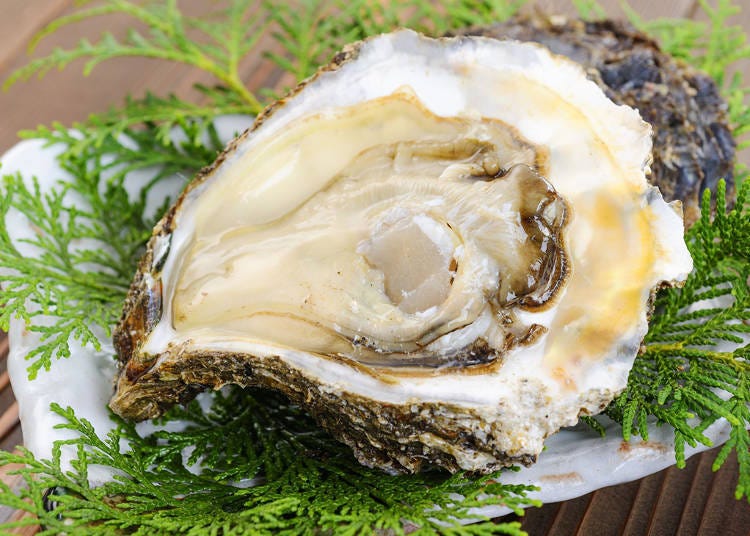
・Area: Shonai
Known as "summer oysters," iwagaki are in season from June to August. They are wild, not farmed, and because they take several years to reach the proper size, strict harvest limits are observed.
Iwagaki are said to retain lots of flavor even after growing large and are usually eaten raw, optionally with lemon juice or a mixture of soy sauce and vinegar. Iwagaki can be enjoyed at the Sakata Fish Market, Shonai Tourist Souvenir Center, and Roadside Station Chokai Furatto.
Slurp up a bowl of Yonezawa Ramen
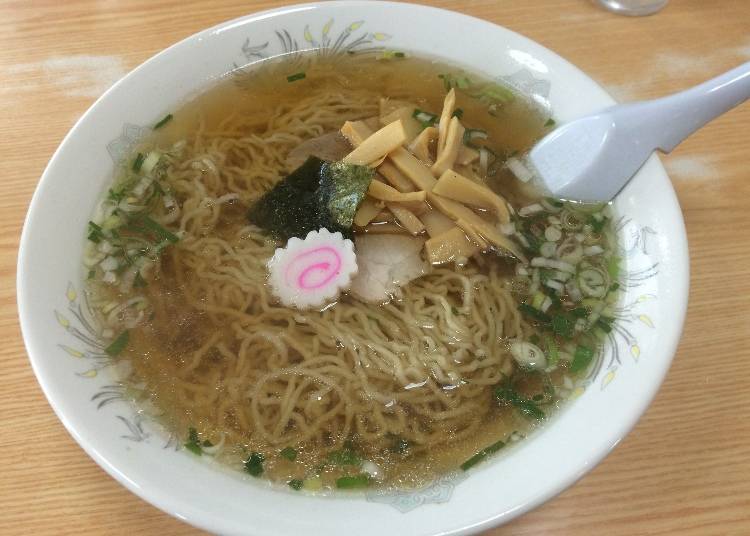
Yamagata has several of its own styles of ramen, one of which is “Yonezawa ramen” from the beef-capital of Yonezawa. It consists of a light broth made of boiled chicken bones and small dried fish called “niboshi,” further flavored by soy sauce. It is most known for its noodles, which are thin, wavy and are each individually handmade to have a high moisture content and left to rest for 2-3 days to add a unique texture. There are more than 100 restaurants specializing in Yonezawa ramen throughout the city, many proudly serving their own unique take on the recipe, so it’s worth trying it more than once!
Chill with Hiyashi Ramen
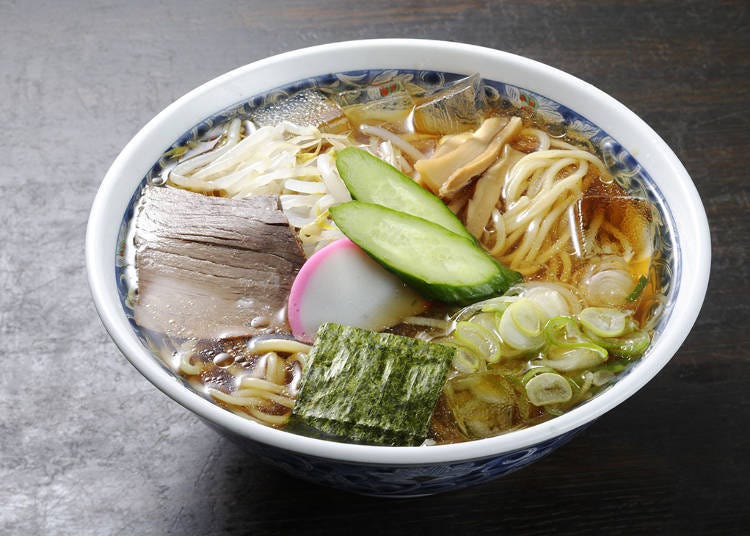
・Area: Murayama
・Especially recommended in summer
While the mountains and coastline offer some refreshment, summer in Yamagata can still be quite hot and humid. To keep your cool while sightseeing, do as the locals do and stop by for a bowl of chilled “hiyashi ramen.”
Hiyashi ramen was invented in Yamagata City in 1952 by a ramen chef whose customers wanted a cold ramen dish to enjoy during Yamagata's hot summers, much in the same way that soba noodles can be enjoyed hot or chilled. Hiyashi ramen is usually made with a shoyu (soy sauce) based soup.
While cold ramen is not uncommon in Japan, it usually has only a small serving of broth and is arranged more like a salad. However, Yamagata’s rendition is exactly like regular ramen, but cold! This means you can relish a rich broth packed with all the classic ingredients like braised pork, egg, and spring onion, just without the heat. There are loads of restaurants serving up hiyashi ramen, including those right near Yamagata Station, so sprinkle a few bowls into your summer sightseeing to halt fatigue from the heat in its tracks.
Taste Ita-soba noodles

Yamagata has prepared buckwheat noodles for a long time. Ita-soba, mainly used in the inland areas like Mogami and Murayama, is characterized by its strong texture and rich aroma. The servings are displayed in a large wooden box.
In Oishida City, Obanazawa city, and Murayama City, in the Murayama region, there are districts called Soba Kaido, where famous soba shops gather, and soba lovers visit from all over the country. Take a stroll around and compare the different noodles.
Satisfy hunger with Zao Jingisukan
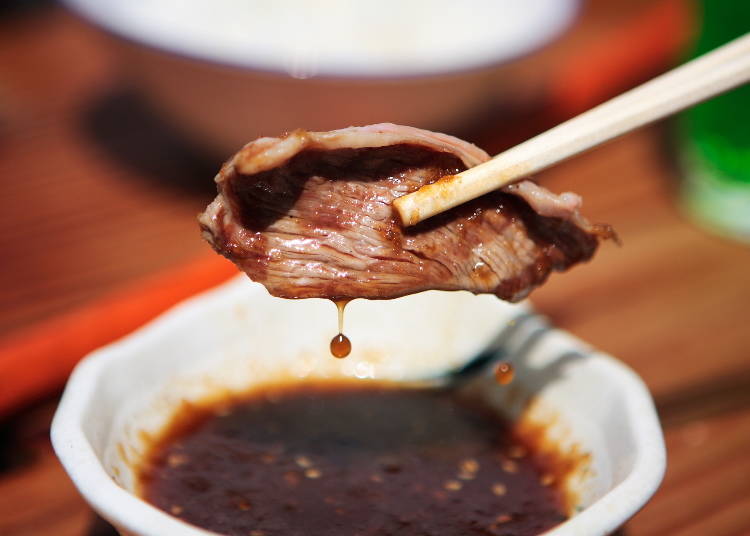
“Jingisukan” is the Japanese pronunciation of Genghis Khan, but rather than the infamous Mongol ruler, it refers to a dish of mutton and vegetables grilled on a cone-shaped hotplate. While commonly associated with Hokkaido, it is also a staple cuisine in Yamagata’s Zao Onsen. In fact, many claim Zao Onsen to be the origin of the dish.
Yamagata was once a leading producer of wool, and the chairman of the Japanese Sheep Association was a resident of Zao. After he visited Mongolia to share information on sheep rearing, he saw locals grilling mutton on cone-shaped iron helmets. Upon returning to Japan, he ordered a similarly-shaped skillet from a cast iron factory in Yamagata, and began promoting the dish as another way to use sheep meat in the face of dropping wool prices around the mid-1900s.
Jingisukan in Zao Onsen is known for its use of tender lamb cut into chunky bites and cooked at the top of the grill with vegetables placed around the lower sides. The strong heat of the hotpot causes the excess fat to melt off the lamb and run down into the vegetables, which is said to improve the meat and draw out the vegetable’s sweetness. After cooking, the ingredients are dipped in “tare” sauce for an extra kick of savory flavor. Lamb is not a popular meat in Japan, so definitely take the opportunity while in Yamagata to try this delectable and rare meal for yourself!
Shop for Dadacha-mame Mochi
・Area: Shonai
Edamame beans are a classic Japanese summertime treat, and Tsuruoka’s “dadacha-mame” are considered one of the most coveted varieties. However, if you can’t make it in time to enjoy them fresh, you can still get a taste with dadacha-mame-flavored mochi. These mochi are made with local Shonai rice packed with generous helping of bean paste, giving them a rich flavor and fragrant aroma said to be just like the real thing. There are several different stores and companies making dadacha-mame mochi in Yamagata, so keep your eye out while traveling. Being cooked fresh, they need to be eaten within a week or so, so don’t buy them too early if you want to bring them back home.
Indulge in Oshidori Milk Cake
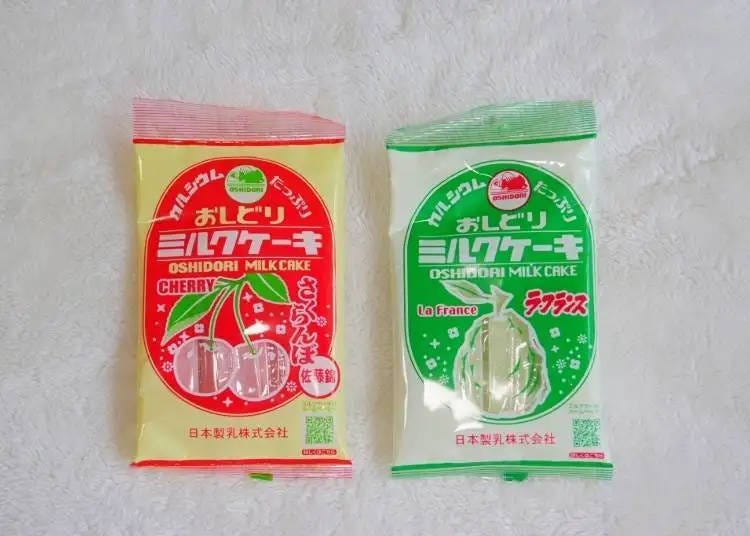
Oshidori Milk Cake is an addictive treat with a gentle, milky flavor that will no doubt please those back home. Advertised as “milk you can eat,” they are packed with calcium, and were created by the first company to ever successfully produce baby formula in Japan. Oshidori Milk Cake was actually invented all the way back in 1919 as a way to make money off the byproducts of powdered milk, and they have been loved by Yamagata locals ever since. While called a cake, they are actually strips of hard, crunchy milk candy, and make for an excellent pick-me-up while climbing the peaks of Yamagata.
Find Yamagata's Sakuranbo Kirara
・Area: Murayama
Ask a regular Japanese person what Yamagata is famous for, it’s likely they’ll answer with “cherries.” Cherries, called “sakuranbo” in Japanese, were first introduced to Japan in 1868, but often failed due to poor conditions. However, they thrived in Yamagata thanks to its optimal climate, and the prefecture is now responsible for 75% of Japan’s cherry output. They are in season from May until July, and make for a sweet and invigorating summer snack.
Plus, for those visiting Yamagata outside of cherry season, or who wish to bring their taste back home, there are also a number of processed cherry treats that capture their taste while extending the shelf life.
One of these is the Yamagata Sakuranbo Kirara (山形さくらんぼきらら), which has an entire cherry encased in clear jelly. The cherry is soaked in syrup to give it a flavor boost without altering its original goodness, while the jelly has hints of cherry and apple juice, culminating in a fruity mouthful. They can last for up to 6 months, giving you plenty of time to savor each morsel.
Collect Tendo Shogi-koma souvenirs
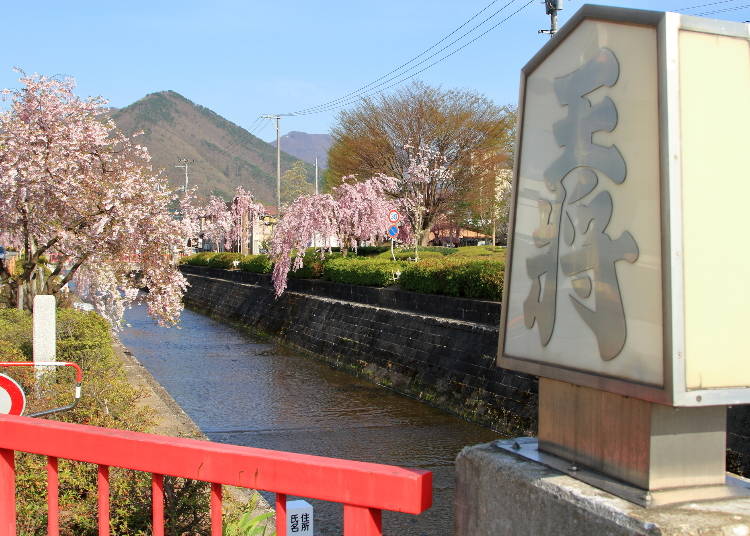
・Area: Murayama
Yamagata has a number of traditional crafts that make for meaningful souvenirs. One of the most iconic is the Tendo shogi-koma, which are “koma” pieces for the game “shogi,” often called “Japanese chess.”
Tendo shogi-koma are delicately crafted from high-quality wood and adorned with vivid carvings of Japanese characters painted with natural black lacquer. They are made primarily in their namesake city of Tendo, but are also common in Yamagata City and Murayama, and can be purchased throughout the prefecture. The game of shoji itself is said to have come to Japan during the Nara Period (710-784), and shoji-koma crafting took off in Tendo during the late Edo Period (1603-1868), when the game became popular with commoners. You can buy full shogi sets, as well as single ornamental pieces that come in a wide range of sizes.
Get Yamagata cast iron goods
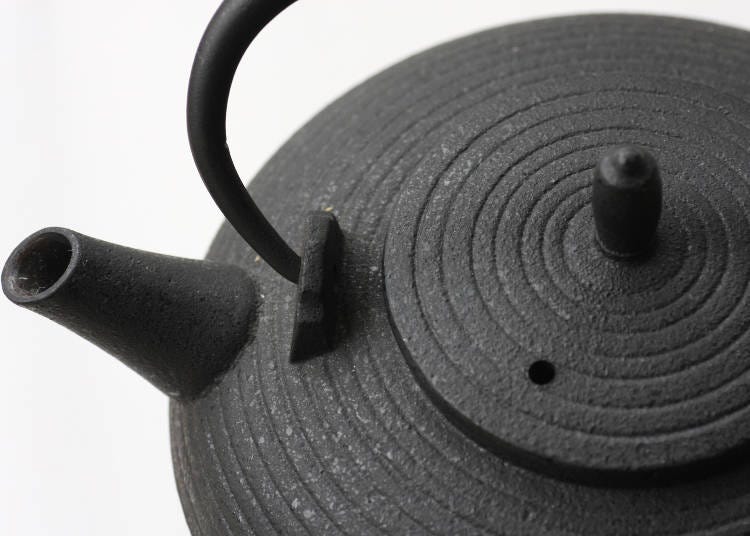
If you’ve got room in your bag, and are willing to lug around a chunk of metal for the rest of your trip, Yamagata Cast Iron is a local traditional craft whose quality is well worth the space and weight. It is produced primarily around Yamagata City, which has long been a hub of metalworking. Even today, the outer mold used to shape the ironware is made from local sand and clay, while the inside is layered with patterned Japanese paper to give the pieces their own distinctive textures and looks.
The region is one of Japan’s top producers of metal pots for tea ceremonies, which are highly regarded amongst collectors for their exquisite design. They exude a grand, solemn character balanced by a thin, meticulously crafted exterior. Ironware is believed to have been made in Yamagata since the late Heian Period around 900 years ago, and blossomed in the Edo Period with official promotion by the ruling lord. While teapots are the go-to item, most workshops produce a wide range suiting all tastes and budgets.
Fun festivals in Yamagata
Yamagata Hanagasa Festival (August 5-7/Yamagata City)
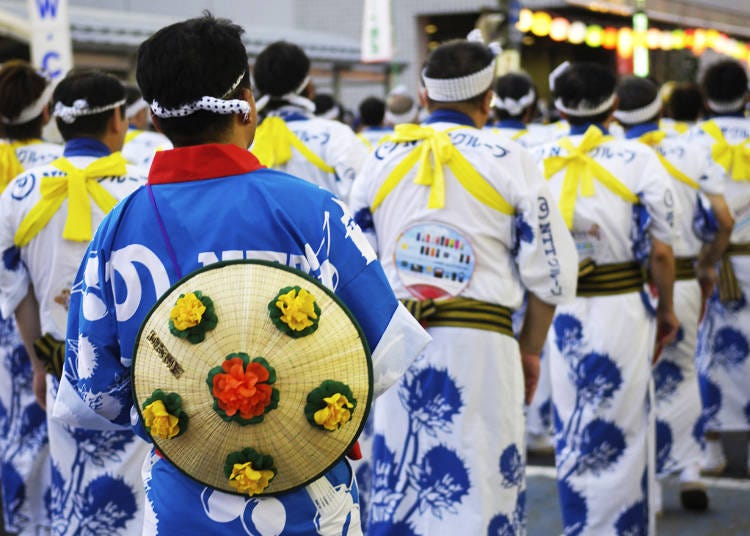
・Area: Murayama
Summertime in Japan is colored by the merry sounds and dazzling hues of traditional festivals. Yamagata is no exception; playing host to several energetic “matsuri” with intriguing histories and customs. One of the most famous is the Yamagata Hanagasa Festival, which is held over three days on August 5th-7th each year.
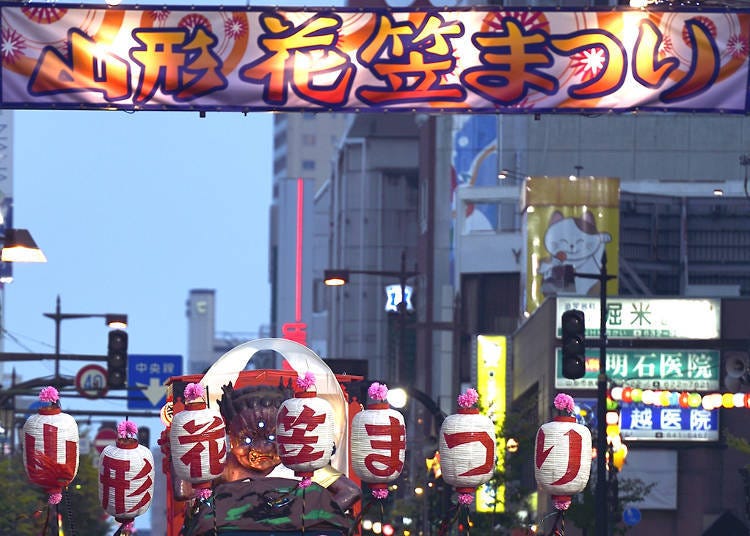
The Yamagata Hanagasa Festival features huge groups of dancers parading down the main streets of central Yamagata City. They perform a graceful, elegant dance timed to the music and taiko drums while rhythmically waving their “hanagasa” cone-shaped hats adorned with safflower motifs, the official flower of Yamagata Prefecture.
There are over 10,000 dancers at the main festival, attracting a whopping one million spectators from across Japan! There are many different forms of the dance to enjoy, each with its own charm, and the jovial vibe will no doubt put you in a festive mood!
Akagawa Fireworks Display (Late August/Tsuruoka City)
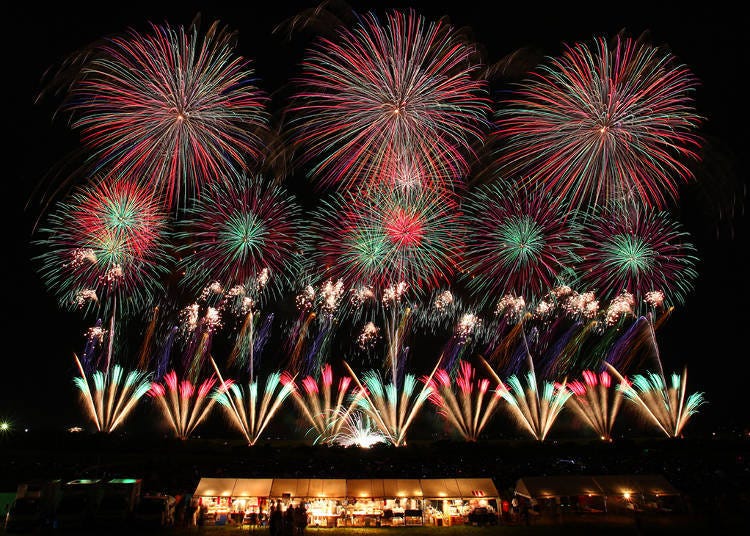
Held on the third Saturday of August each year, the Akagawa Fireworks Display is widely considered to be one of the top fireworks events in Japan.

The Akagawa Fireworks Display takes place along the banks and riverbed of Tsuruoka's Aka River, for which the event is named. Pyrotechnicians chosen for the All-Japan Designer Fireworks Competition also participate, contributing to the total of around 12,000 fireworks that light up the night sky.
-
Akagawa Fireworks Festival Area赤川花火大会 会場
- Address Daihoji, Tsuruoka, Yamagata 997-0017
Yamagata: A Destination For Lovers of Nature, History, Food, and Crafts
With top-notch nature, outdoor activities, produce, history, and more, Yamagata is a place for active travelers seeking a less-touristy, more off-road nook of Japan.
Instead of sprawling cities, you’ll find unique local dishes, hot springs hidden in thick wilderness, lesser-known yet important sites of Japanese history, time-honored crafts, and plenty more.
With the convenience of the bullet train to get you started, a world of wonder awaits those who decide to take the plunge into the depth of Yamagata!
From Melbourne, Australia, Steve lives in Niigata City, two hours north-west of Tokyo. His passions include discovering local sake, dining at interesting restaurants and travelling as much of Japan as possible.
- Area
- Category
*Prices and options mentioned are subject to change.
*Unless stated otherwise, all prices include tax.
Popular Tours & Activitiess
Recommended places for you
-
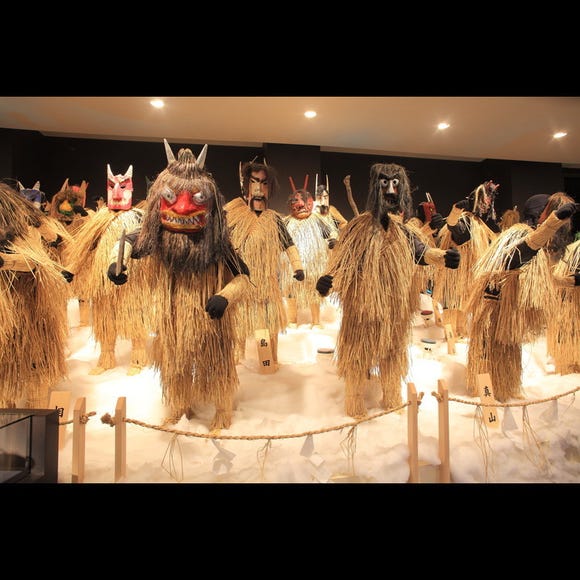
Namahage Museum
Other Museums
Surrounding Areas Of Akita
-

Geibikei Gorge
Rivers, Lakes & Canyons
Morioka, Hiraizumi And Hachimantai
-

Aomori Museum of Art
Art Museums
Aomori, Hirosaki And Hachinohe
-
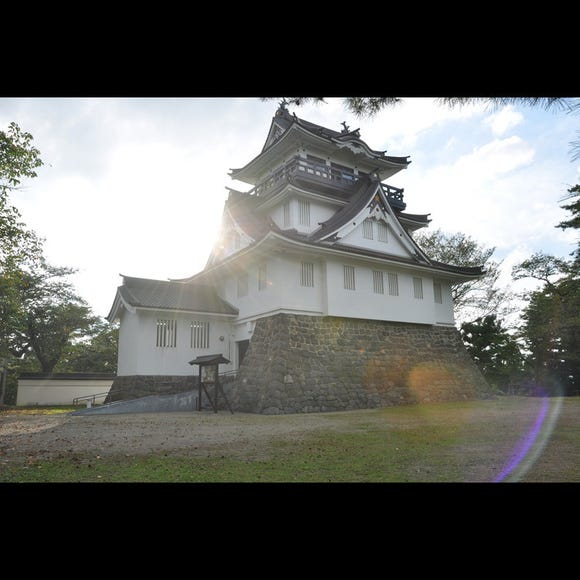
Yokote Park
Parks
Surrounding Areas Of Akita
-

Akiu Onsen
Hot Springs (Onsen) & Bath Houses (Sento)
Sendai And Matsushima
-

Ishiguro Samurai House
Historical Places
Surrounding Areas Of Akita
-

Aomori's Quiet Side in Autumn: 5 Scenic Spots in Hachinohe According to a Local
by: Marco Blasco
-

Shopping in Niigata: 9 Must-Buy Souvenirs & Local Sake to Take Home
by: ShiroKu inc.
-
Ad

Advice from the Experts at Hitohira: Here's How to Choose the Best Japanese Knife
-

Shopping in Akita: 11 Must-Buy Souvenirs & Where to Shop Near the Station and Airport
by: ShiroKu inc.
-
Ad

Why Fukushima is the Next Big Food Destination in Japan The Foodie Paradise Only 90 Minutes from Tokyo
-

What to Buy in Aomori? 11 Aomori Souvenirs Locals Actually Recommend
by: ShiroKu inc.
-

38 Best Things to Do in Sendai & Miyagi: Sightseeing, Food, Shopping & Souvenirs
by: Guest Contributor
-

10 Important Japanese Phrases to Know Before You Enter a Japanese Convenience Store!
by: Teni Wada
-

Japanese Foods List: 16 Crazy Tasty Japanese Tohoku Region Dishes You've Never Heard of
by: Guest Contributor
-

Togatta Onsen Guide: Best 6 Places to Indulge Yourself in Miyagi Prefecture's Magical Hot Springs Resort Village
-

Ride a railbike, slurp some soba, and spend time with Akita dogs in northern Japan
-

Japan's Bath Culture: Tips You Should Know!















